Amazing Race: Nine days in the Moroccan desert with no GPS, no cellphones—and no men

It’s just after sunset in the Moroccan Sahara and the sand is already cold. But if you put your hands a few inches under the surface, there's still warmth. Nestle into a dune and it feels like a heated seat.
We're camping for the night in a wide trough between several giant dunes along with a half-dozen other 4 × 4s, a helicopter and four dune buggies that were traveling with the teams scattered around this region tonight. They are competing in an all-female off-road rally that began with a ceremonial start on March 18 in the South of France and will end in southeast Morocco in three days, on March 30. Most of us in the campsite are members of the press, here to chase after the competitors through the desert.
Annick Martin, a petite guide with untamed blonde hair, is preparing a pot of pasta for a gaggle of tenderfoot journalists. Wine has appeared, and those who aren't transfixed by the spangles in the night sky are searching for clean cups when someone sees a viper slithering past the folding tables. Vipers are ambush predators that hide under the sand waiting for their meals to come to them. They're easy to step on. But not to worry. Martin puts down her spoon, goes to the back of a truck and pulls out a machete. After all, we sleep only a few feet away.
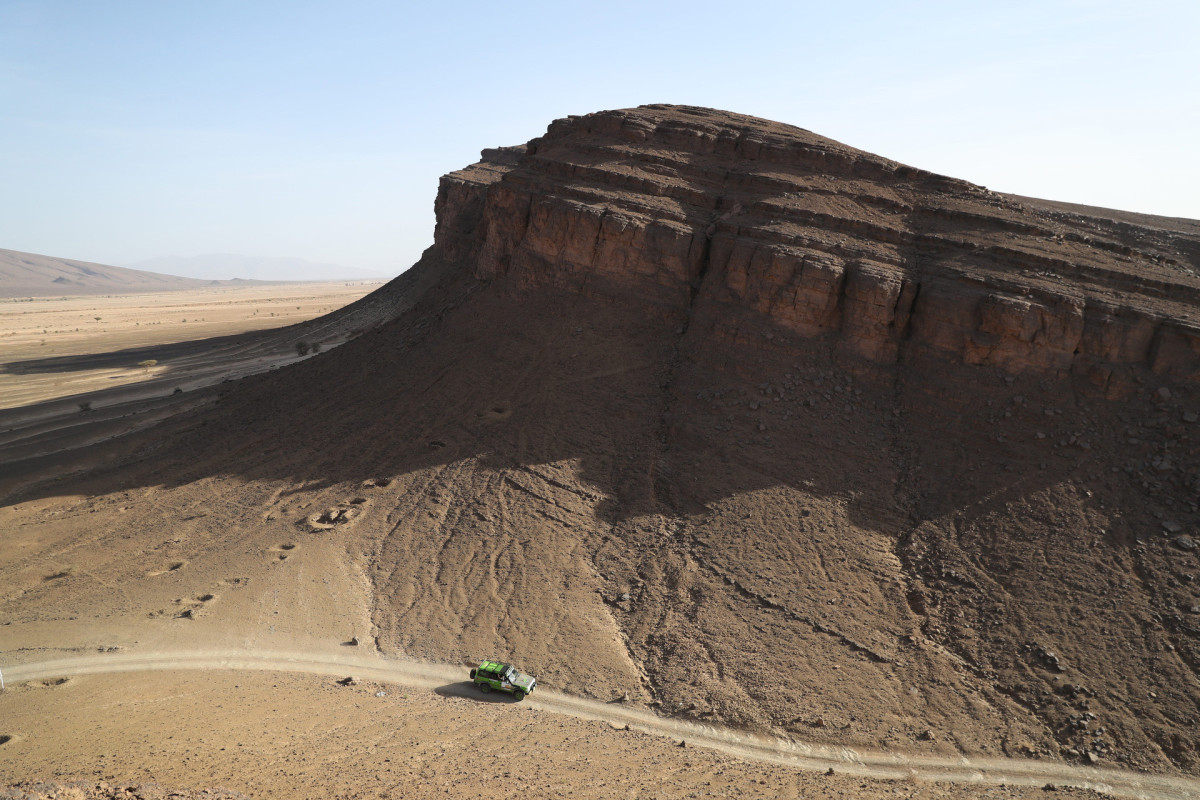
Later Martin laughs when she describes how the serpent's jaws kept snapping after she lopped off its head. Anything that survives in this hostile landscape doesn't seem inclined to give up on life easily. Even the thorny plants look dangerous, as if they were designed by Tim Burton. Earlier in the day I asked about a grove of fruit trees in the middle of nowhere. "Yes, those are fruit, but they're poisonous," a guide said. "Even the animals won't eat them."
To placate those of us who fear that even a dead snake might still be deadly, Martin scoops the toothy viper bits into the fire with the tip of her machete. Then she turns back to her spicy coconut sauce, hooting and laughing with the French photographers, somehow smoking, stirring and drinking simultaneously.
Back home in France, Martin is a retired pharmacist. Out here she's a 65-year old desert ninja who can hustle her 4 × 4 up an 80-meter dune and, more importantly, careen down the other side without flipping boot over hood. And of course there's the machete, which she got 15 years ago in Vietnam when she was an equipment assistant transporting canoes, bicycles and food for an insane, long-distance off-road motor race called the Raid Gauloises. The knife, she says, "always accompanies me in my car."
She comes to Morocco every spring to work with the Rallye Aïcha des Gazelles du Maroc. Martin competed years ago; now she and the other media drivers, mostly male, are in charge of getting us journalists from checkpoint to checkpoint, hurtling over oceans of sharp bulky rocks, dunes and mounds of camel grass that can bring even a jacked-up 4 × 4 to a clunking halt. The rally is unusual for two reasons: It's for women only, and it's not about speed. It's a navigation race, with no GPS technology allowed. The team that travels the fewest kilometers and still hits each of the checkpoints—between eight and 15 each day—wins. The teams of two Gazelles, as the women are called, are allowed only a compass and topographical maps that were drawn decades ago. Each morning they are given the longitude and latitude of their checkpoints, and they have to figure out the shortest route, adjusting for their driving ability and the terrain.
The event's founder, Dominique Serra, says she wanted to create something unique for women. "People see cars and they think of speed, but we wanted to put in place the constraints that demand strategy and reflection and navigation off-road," she says. The rally started 27 years ago with nine cars. Now there are 158 teams in 4 × 4s, Quads, trucks, crossovers and motorbikes.
Like many endurance competitions, the Gazelles draws bucket-listers and, to a lesser extent, racers who want to win (or at least finish). The event is not well known in the U.S., but it gets heavy coverage in Europe and Morocco. This year's field included the 2002 Olympic downhill gold medalist Carole Montillet of France and a team comprised a former Miss France and Kiera Chaplin, Charlie's granddaughter.
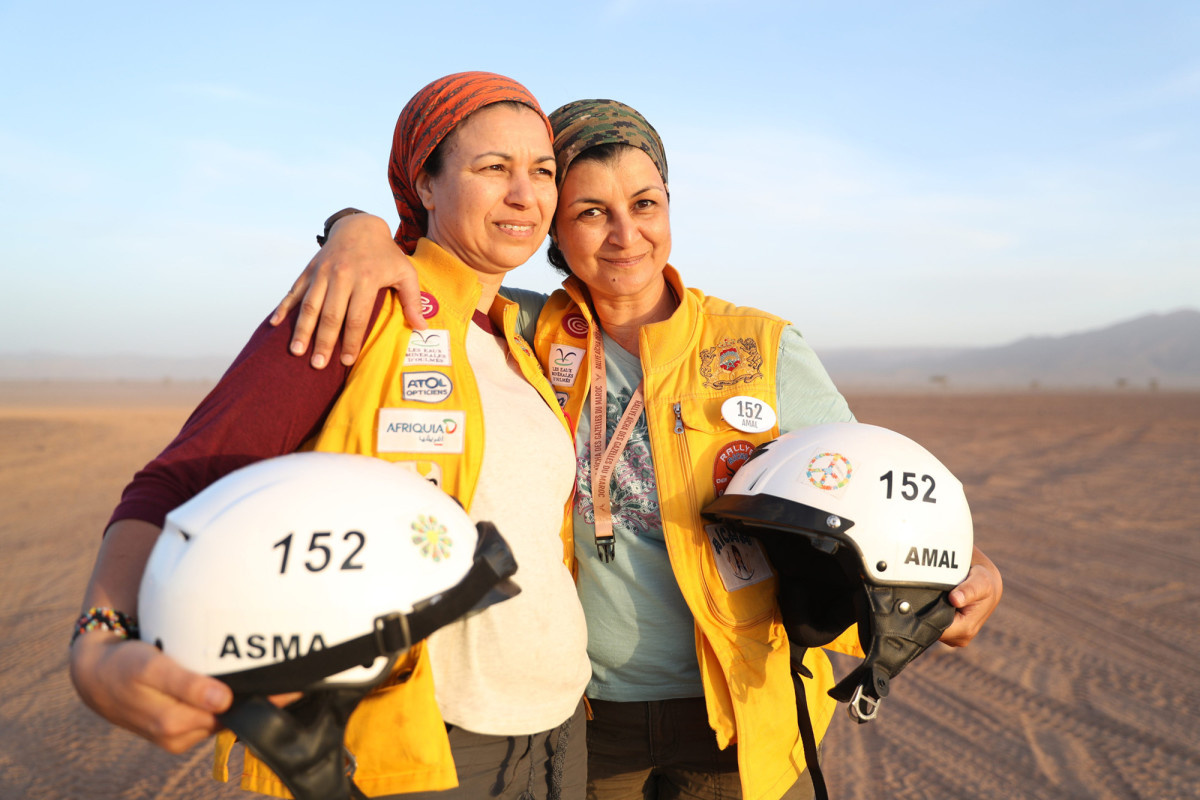
It's hard to fathom how a process that's so Lewis-and-Clark works with cars in the desert. Women in their crash helmets plot courses on maps that flutter in the wind. They climb to the top of dunes and rocks and hold compasses at eye level as they scan horizons that, to me, look exactly the same. Sometimes the blowing sand is so thick I can't even see our car, never mind the Atlas Mountains, which are supposedly somewhere around here. Other times I'm sure I'm seeing actual mirages: That ocean behind the dunes can't be real, can it? Not when, I later learn, we're practically in Algeria, eight hours from the Atlantic.
The navigators on each team do this climbing-and-sighting ritual at least a dozen times a day, finding new landmarks and adjusting the route a few degrees here and there. It's slow going. They have to move away from the metal of the car so the compass readings aren't skewed, and they have to be high enough that they can pick out some sort of distinguishing feature in the vast landscape that resembles a sea of sand.
At one of the last checkpoints I meet Louise Bergeron. She is a cheerful rally official from Montreal who has competed in the event five times and now trains participants. The whole thing, she says, is fun. I can barely hear her over the roar of the wind as she explains to me the penalties—enforced in added kilometers—for calling a mechanic or skipping a checkpoint. The biggest mistake the women make is navigating on instinct. "Even if you think you see a landmark or the checkpoint flag itself, you could still be off by 20 kilometers," she says. "Take out your compass and check again. You can drive like a champion, but if you don't know where you are, it doesn't matter." It sounds deeper than a racing philosophy; I jokingly ask Louise if I can call her occasionally for life advice.
She laughs and heads off to inspect the leading cars, making sure they're following safety regulations and don't have any contraband equipment. She also checks on the racers' well-being. This is the sixth day of a competition that requires them to rise from their tents at 4 a.m. and drive 13 bone-rattling hours. It's also usually the point at which any latent incompatibility between teammates becomes disabling: Teams that have raised tens of thousands of dollars in sponsorship money chuck it all just because they can't stand the thought of one more meal together of sandy tuna from a can. I totally get it. I'm pretty sure one particularly long car ride led to my divorce.
Later I meet Karima Benouaret Benzid, a 39-year-old French-Algerian flight attendant who lives in Versailles and is competing for the fourth time. Her last partner didn't like sand and preferred roads to dunes, which makes navigating the desert a bit tricky. Her new one, Parisian who manages business training programs named Adeline Drouin, is a much better fit. I first notice Benzid because on the side of her 4 × 4 is a huge picture of a veiled Muslim woman reading a book, which was commissioned by Drouin to promote literacy in Morocco, where some areas are very traditional and most women are veiled. "We want people to know that women have the right to read and write," Benzid says. "With knowledge you can work, you can have independence." After the competition, Drouin leaves that picture on the side of the truck which she uses as a street vehicle in one of Paris' mostly Maghreb suburbs.
As the trucks make their way through the desolate course, kids turn up, seemingly from nowhere, and run alongside yelling, "Hey, Madame Aïcha!" (Aïcha is the name of the Moroccan food company that sponsors the race.) Competitors carry T-shirts to give to them, and many in the press donate their food ration boxes. Many of the locals here are nomadic Berbers, a tribe who still use a language of symbols that is thousands of years old. Their hospitality is legendary: nomads living in lean-tos who will offer you tea in their only cup.
The first year Benzid came to Morocco, she was lost all the time and finished 107th. She's pretty comfortable out here now, and she's come to appreciate this nontraditional form of rally racing. "The guys who do some of the organizing tell us they couldn't do this race," she says. "They just would not spend hours looking for a [checkpoint] flag in the desert. They'd just get annoyed and quit."
Indeed, despite the obvious difficulty of navigation and the harsh aspects of camping in the desert, the question of whether this is a real sport or just some sort of extreme adventure travel sometimes comes up. Maybe it's the extravagance of the food in the camp dining tent. (How many wilderness competitions have freshly shaved parmesan for your pasta or three kinds of wine at dinner?) There's even a "beauty contest" for the cars, which are elaborately decorated not just with sponsor mentions, but with messages from family and art representing the team's origins or mission. And because more than half of the women are first-timers, there's a bit more hand-holding here than there is in other extreme sports competitions. Serra is unapologetic about what she calls the more feminine aspects of the event. "We're women among women," she says. "We're looking to have our own expression of this sport for women because we really are different."
The team of 40 or so mechanics who function as a communal pit crew—all of whom are men—joke affectionately about the women who get so lost that they have to be guided back onto the course over the radio. But make no mistake: Anytime cars are going fast in close proximity there is danger. There are crashes, punctured fuel tanks, broken wheels and crushed chassis.
Often, one vehicle cresting a dune will smash into another that's been stuck on the other side. That's how Chaplin's car got banged-up. The other team taped up its door and kept going. Chaplin, who models in New York City and manages her grandfather’s estate grew up in Switzerland where the dunes are made of snow, but her partner, Cindy Fabre, a former Miss France knows the sand well, having done the rally three times. They threw their broken grill into the backseat and got back on track.
While wrecks can lead to road (or sand) rage on occasion, the vibe during the rally is one of cooperation. (After her crash, Chaplin says, "Everyone hugged and we all kept saying we were sorry.") There are a lot of fiftysomething mothers who take care of the younger girls. Many are there for the same reasons that Benzid competes: to prove something to themselves—and to those they leave at home for two or three weeks. "My mother was like, You shouldn't do this, you have three kids and a husband, it's dangerous," Benzid says. "I said, 'Sure I have a family, but they can do things without me. They have to cope. And I have to live my life with my own dreams too.' "
The sentiment wasn't lost on her nine-year-old son. When Benzid picked him up from the airport not long after the end of the rally, he said, "Mama, you were gone for a long time, but it was worth it. I'm proud of you." And he should be. Benzid's team came in fifth.
Amazing Race: 2017 Rallye Aicha des Gazelles
2017 Rallye Aicha des Gazelles
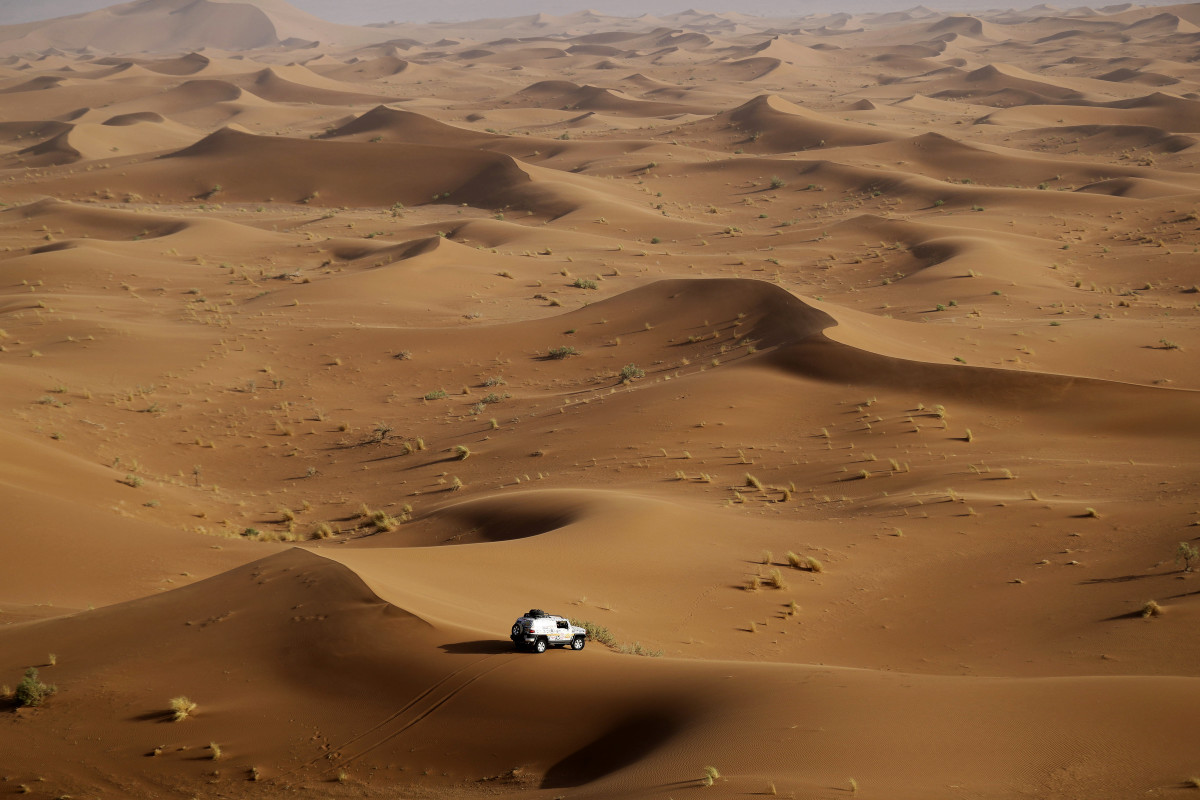
Team 405 of Florence DERAMOND and Karima LAAROUSSI MOUHYI both from Morocco, during a the leg from Oulad to Foum Zguid.
2017 Rallye Aicha des Gazelles
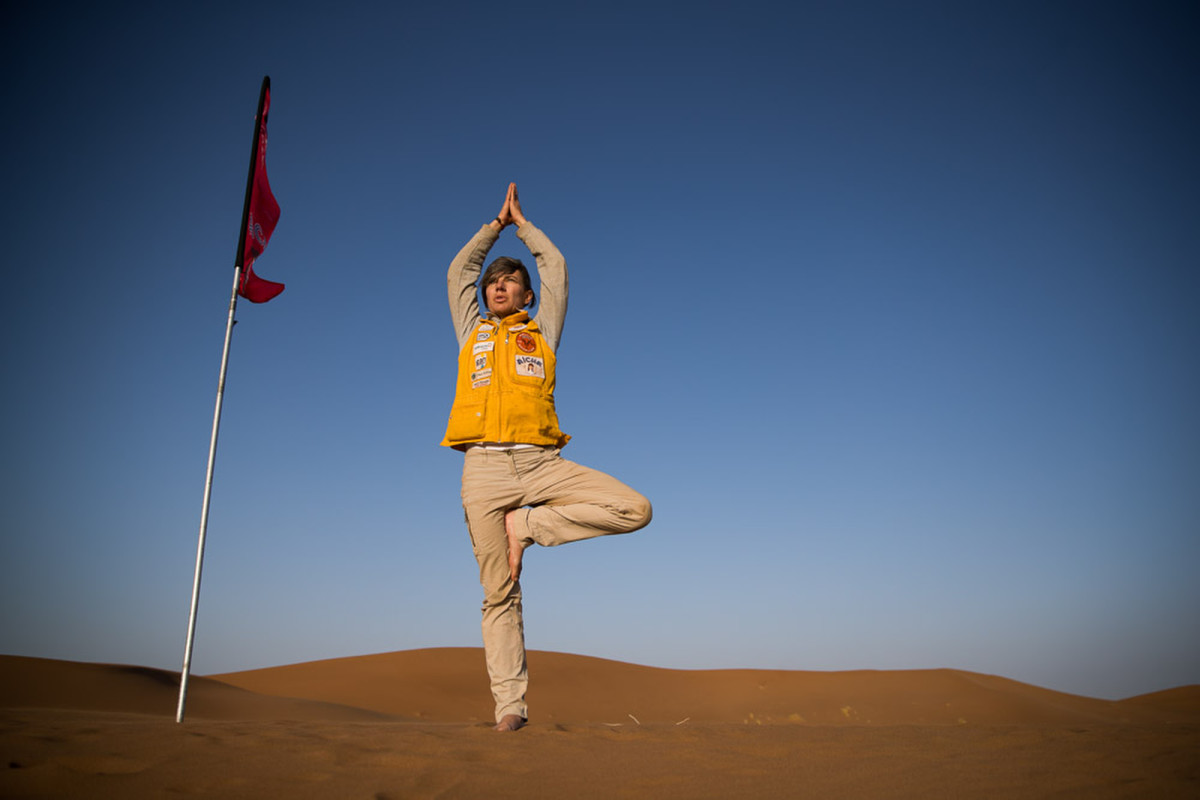
Fanny DELAPLANCHE of team 195 doing early morning yoga before the start of the day.
2017 Rallye Aicha des Gazelles
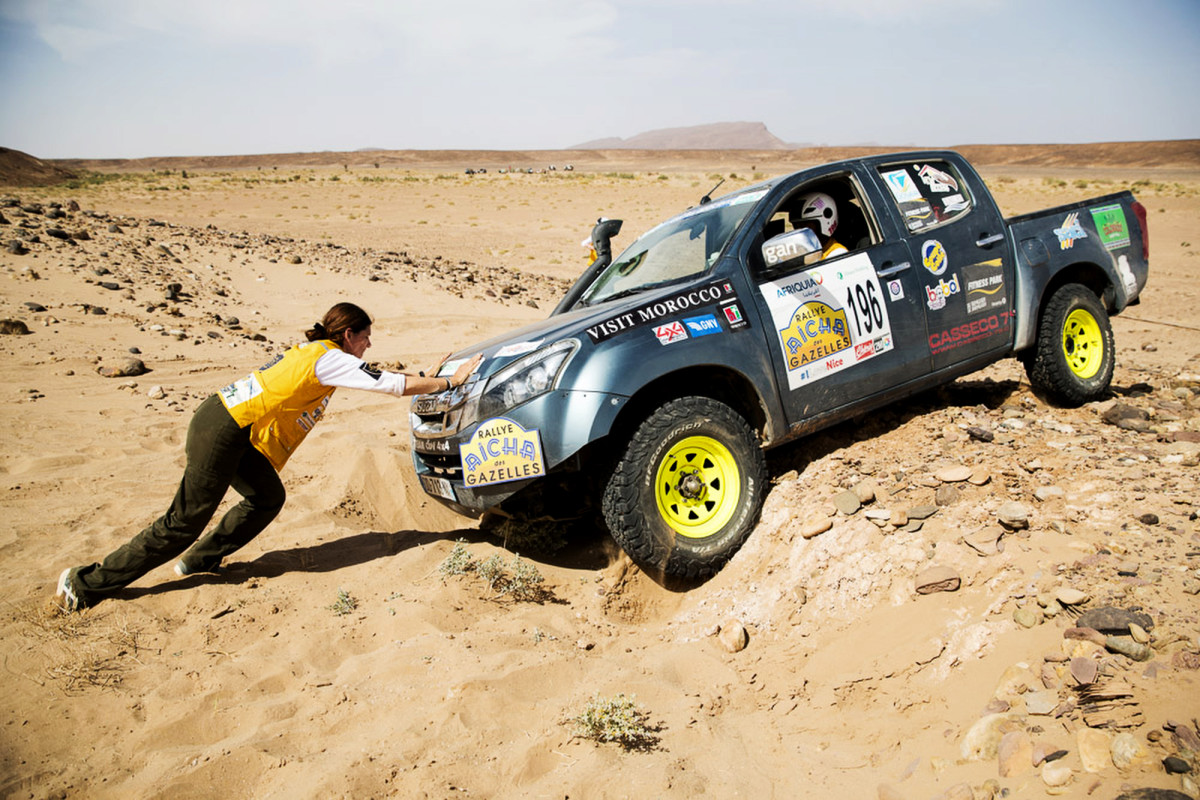
Team 196 Ambroisine (Ambre) PITAUD BOULATE pushes the car with Fany LUMIERE in drivers seat after getting stuck on the last leg the Foum Zguid loop.
2017 Rallye Aicha des Gazelles
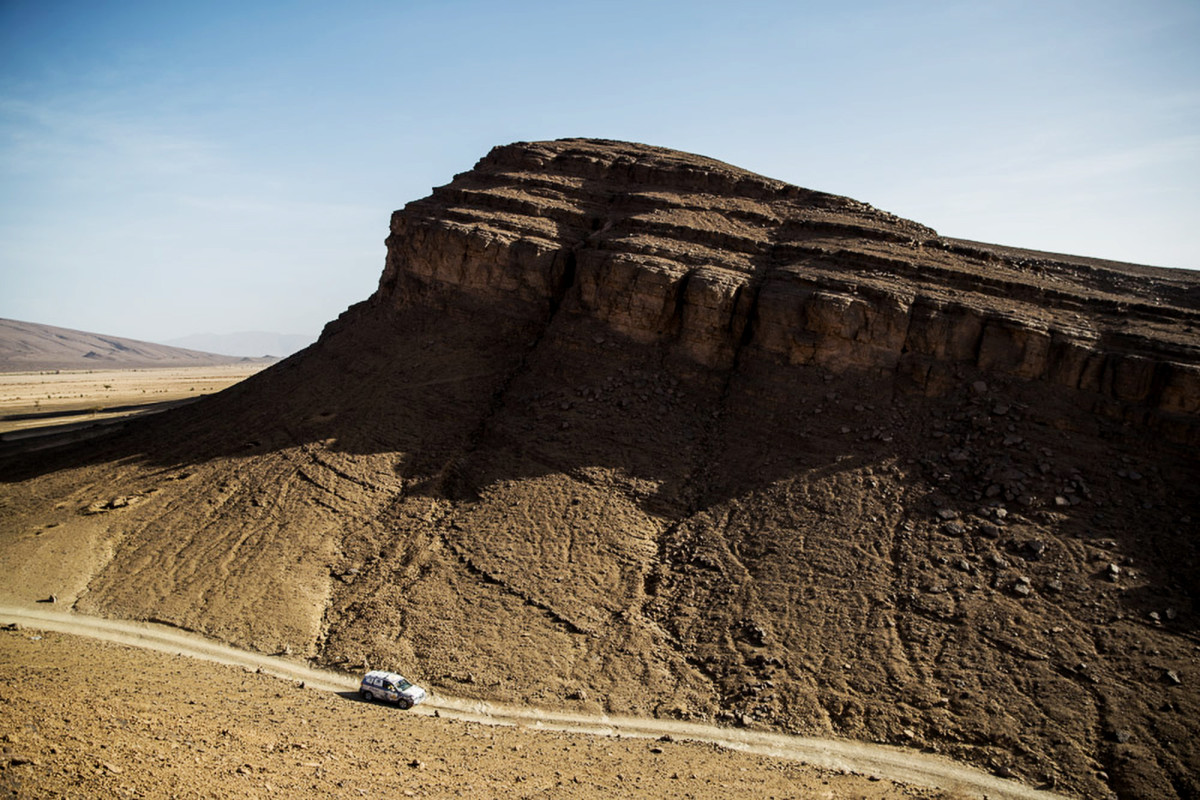
Team 310 of Brigitte JUCHET and Amrita VALDANT from france during the last leg of the rally.
2017 Rallye Aicha des Gazelles
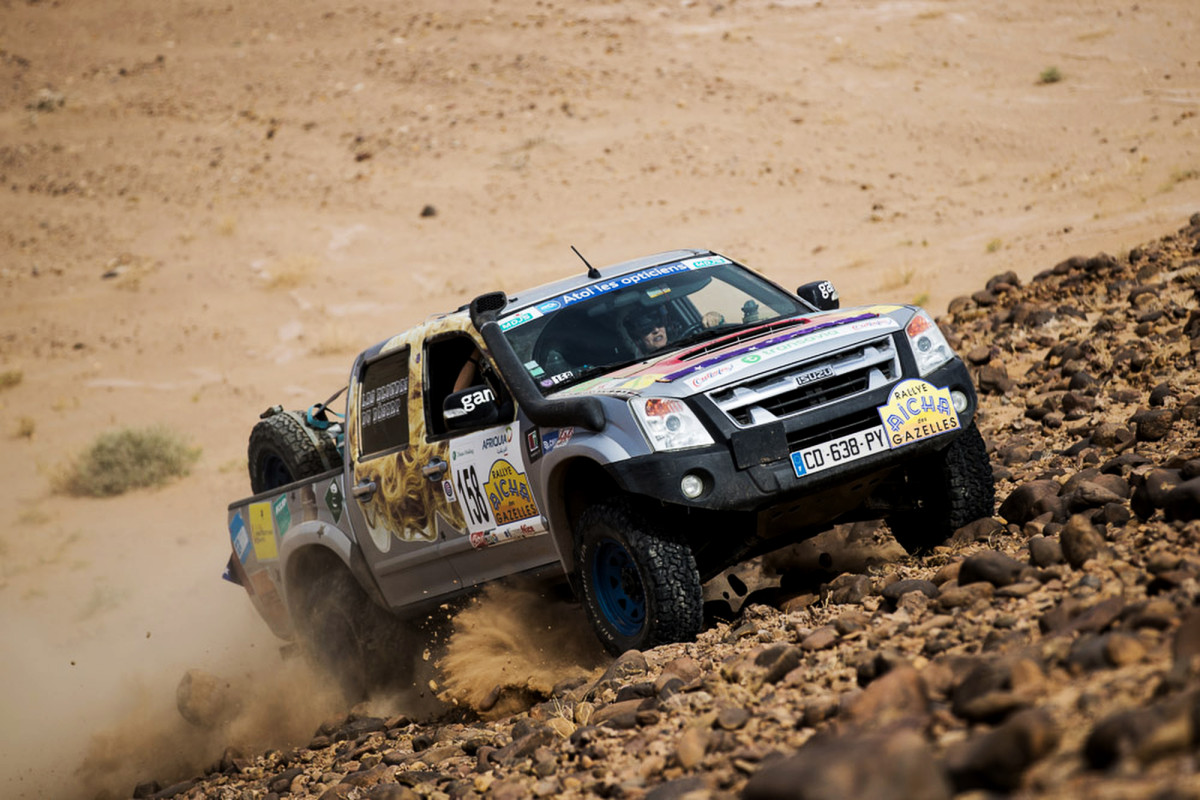
Team 158- "Blondes of the desert" Christine AIACH and Isabelle LOPEZ during the last leg of the Fouim Zguid loop.
2017 Rallye Aicha des Gazelles
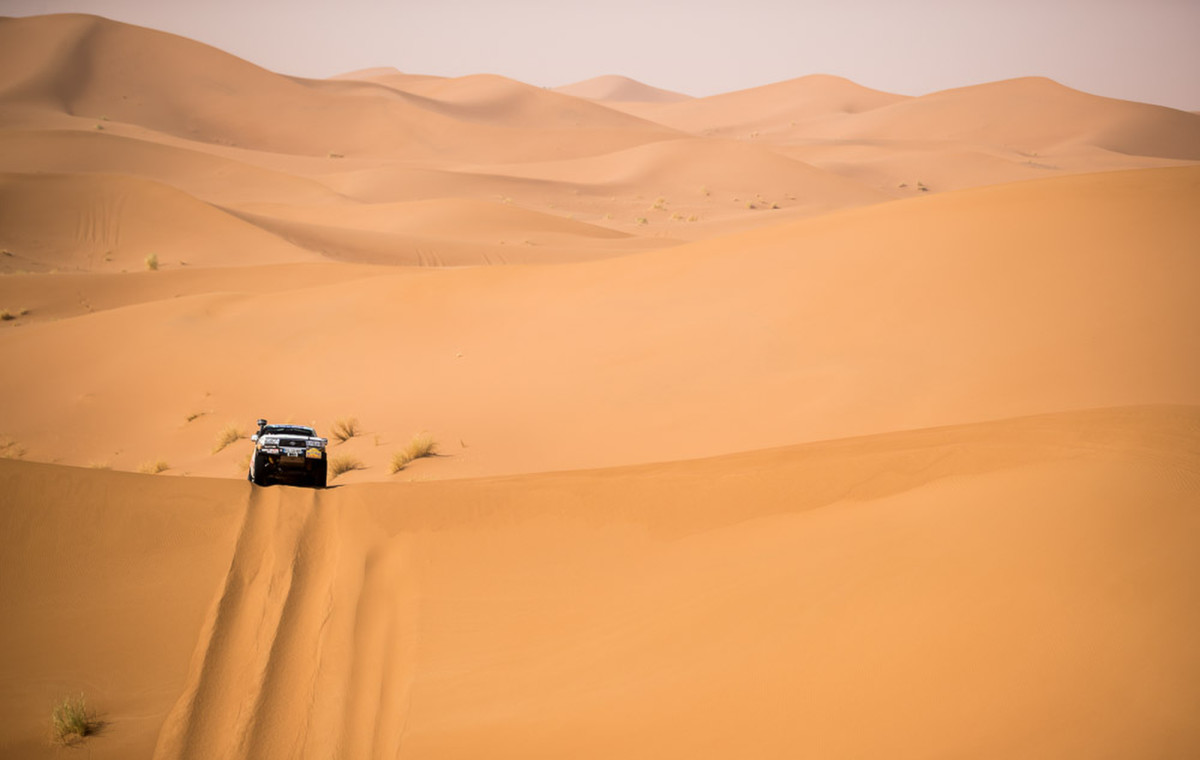
Team 108 of Adeline DROUIN and Karima BENOUARET BENZID from France jump a sand dune during a the leg from Oulad to Foum Zguid.
2017 Rallye Aicha des Gazelles
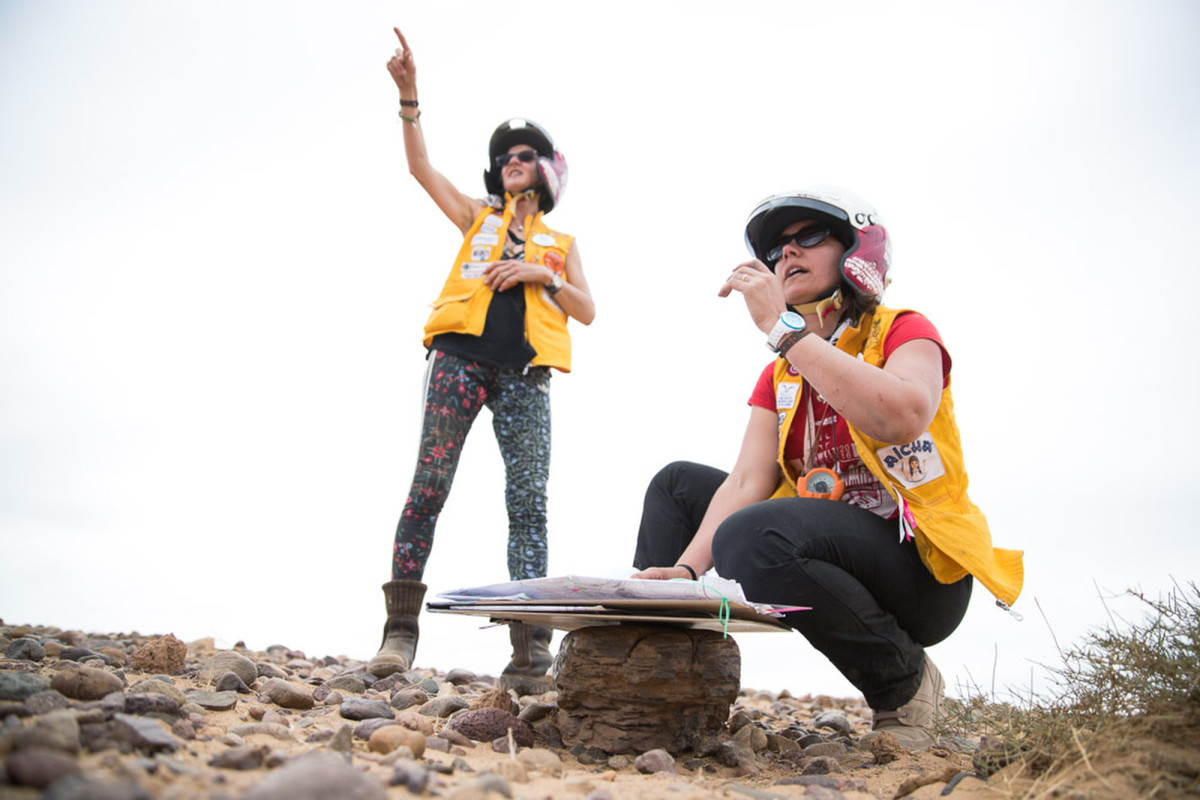
Team181 - Swiss. Olinka MORAN and Peggy DREOSTI
2017 Rallye Aicha des Gazelles
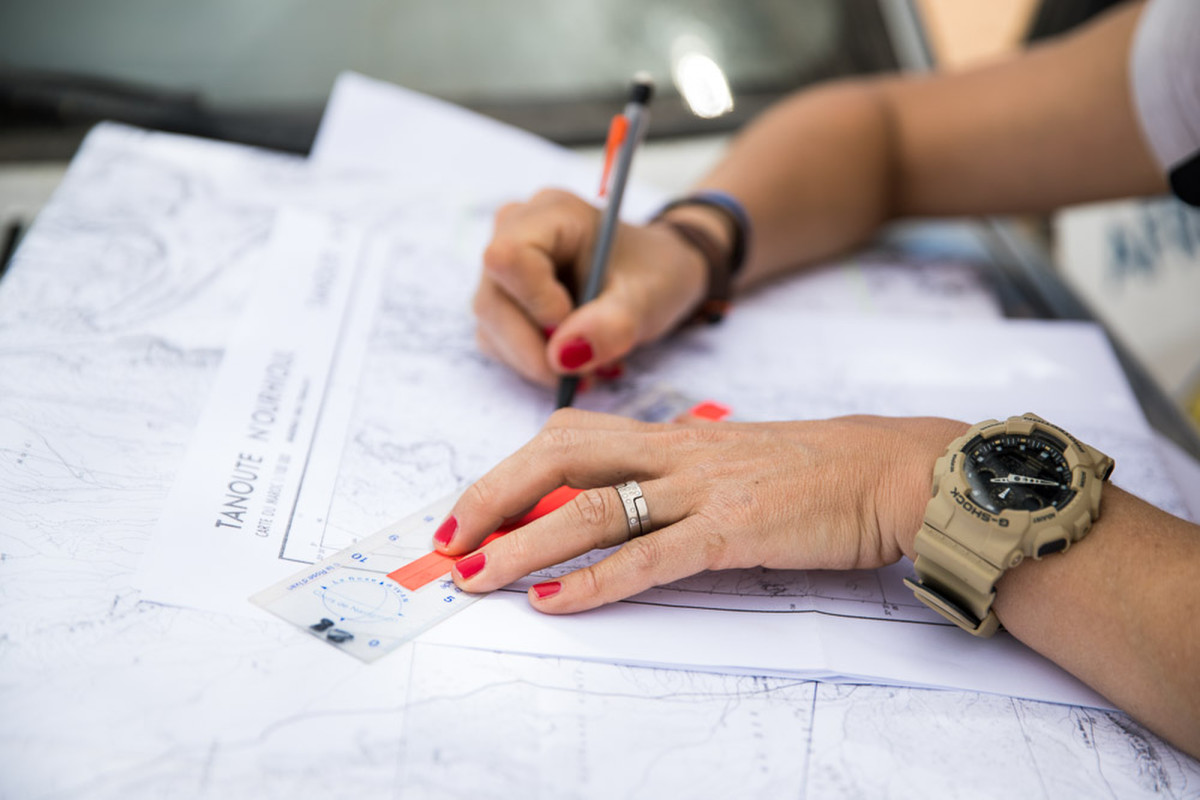
Team 230. The hands and painted nails of Sophie BOURGNE and Armelle CARADEC during the leg from Nejjack to Oulad.
2017 Rallye Aicha des Gazelles
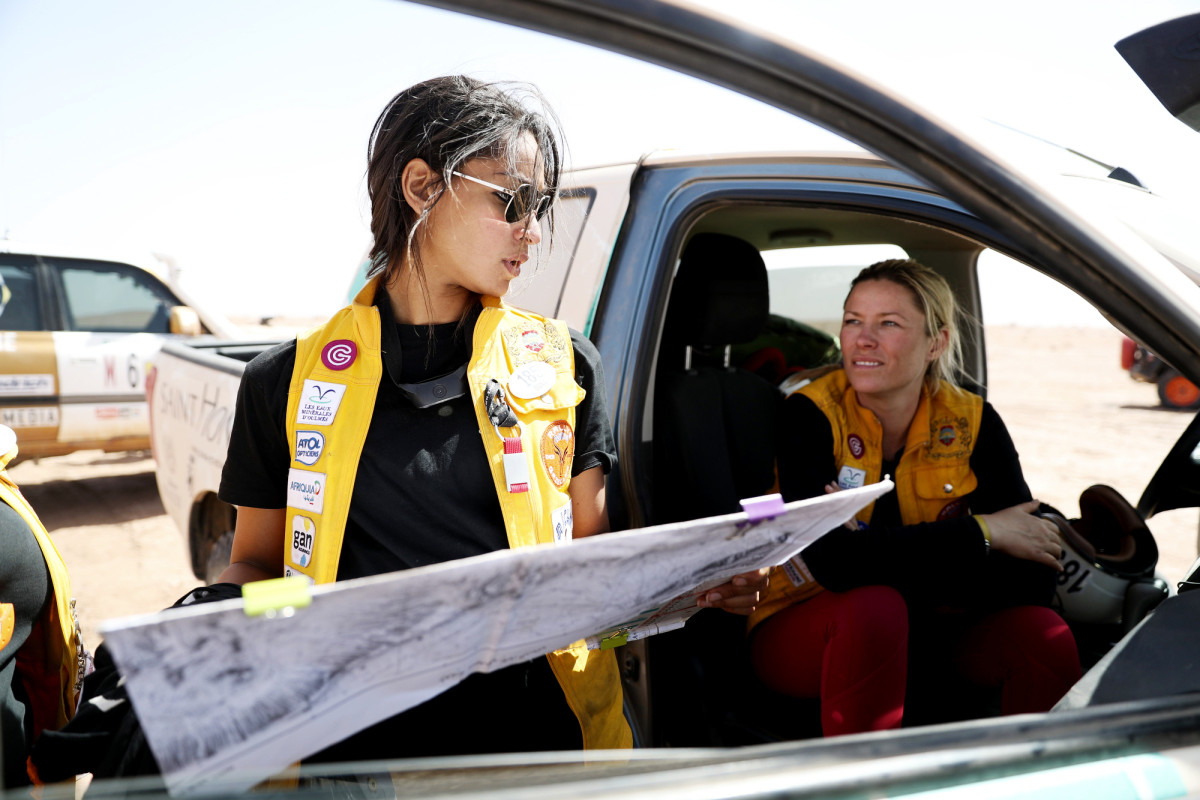
2017 Rallye Aicha des Gazelles
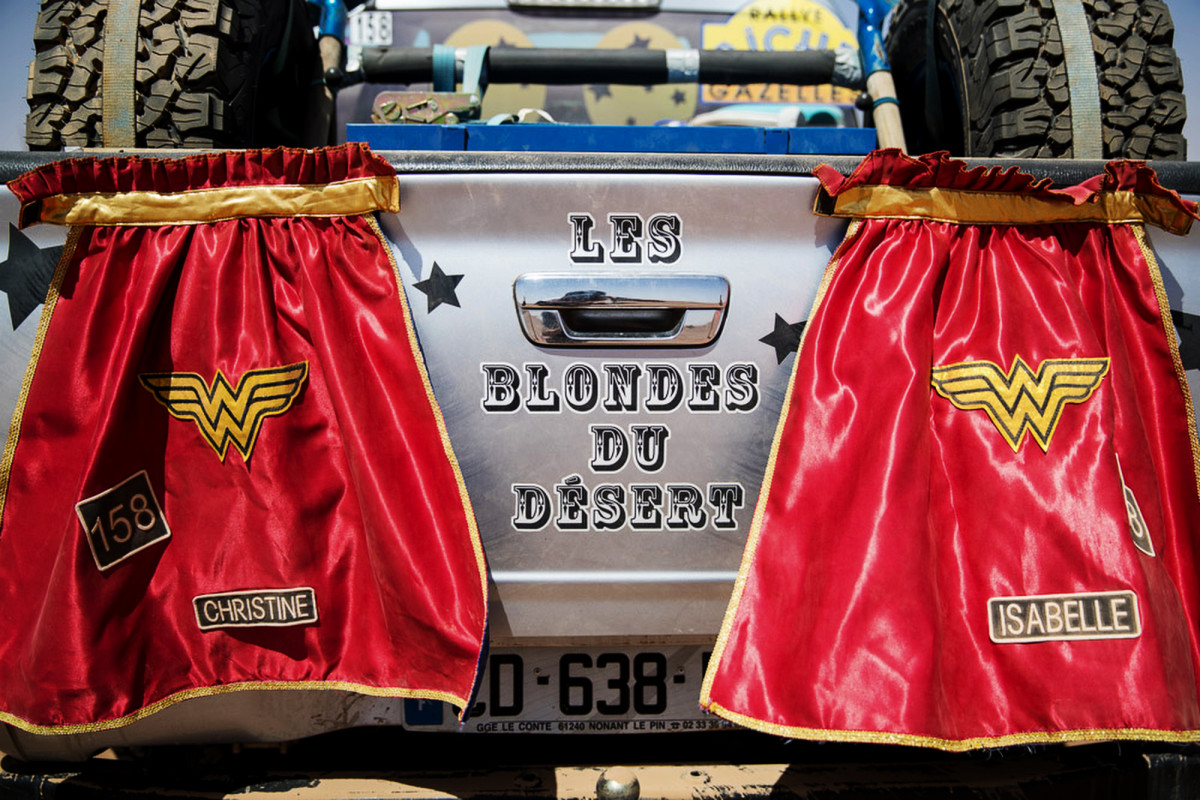
Team 158- "Blondes of the desert" Christine AIACH and Isabelle LOPEZ
2017 Rallye Aicha des Gazelles
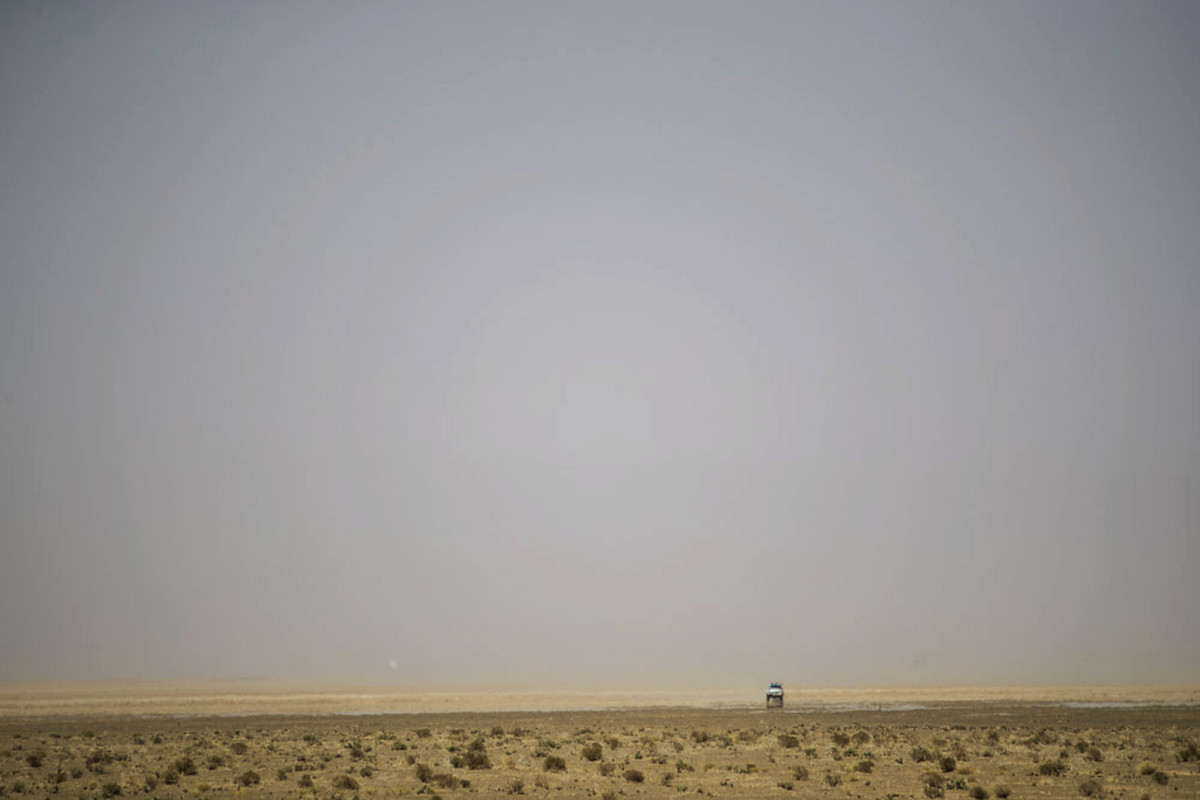
A competitor approaches a checkpoint during a stage on the rally.
2017 Rallye Aicha des Gazelles
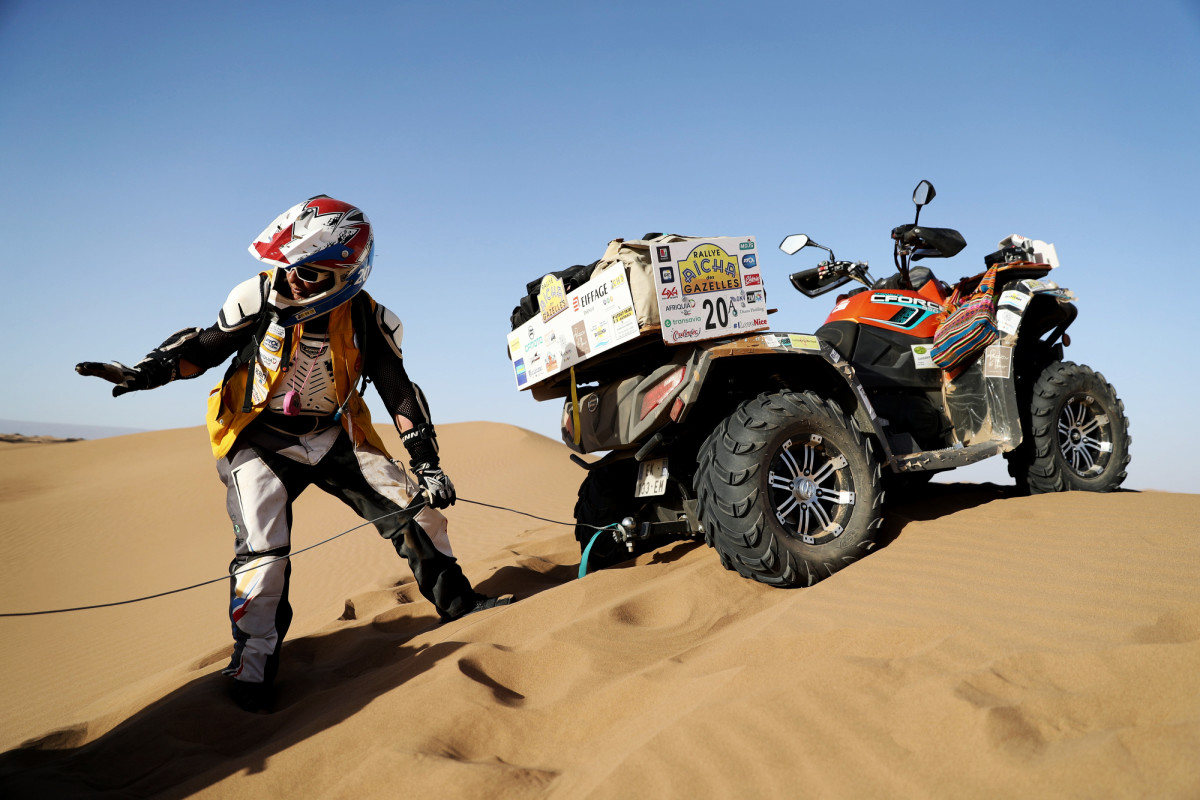
2017 Rallye Aicha des Gazelles
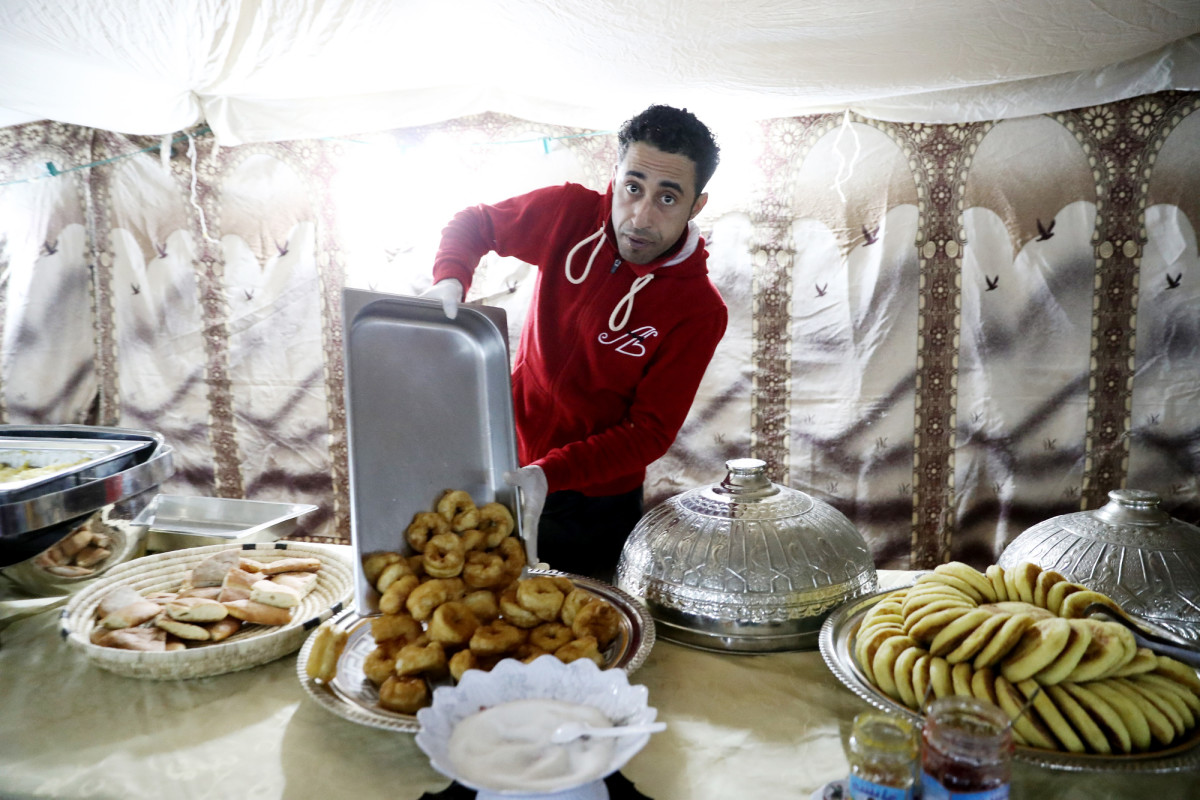
2017 Rallye Aicha des Gazelles
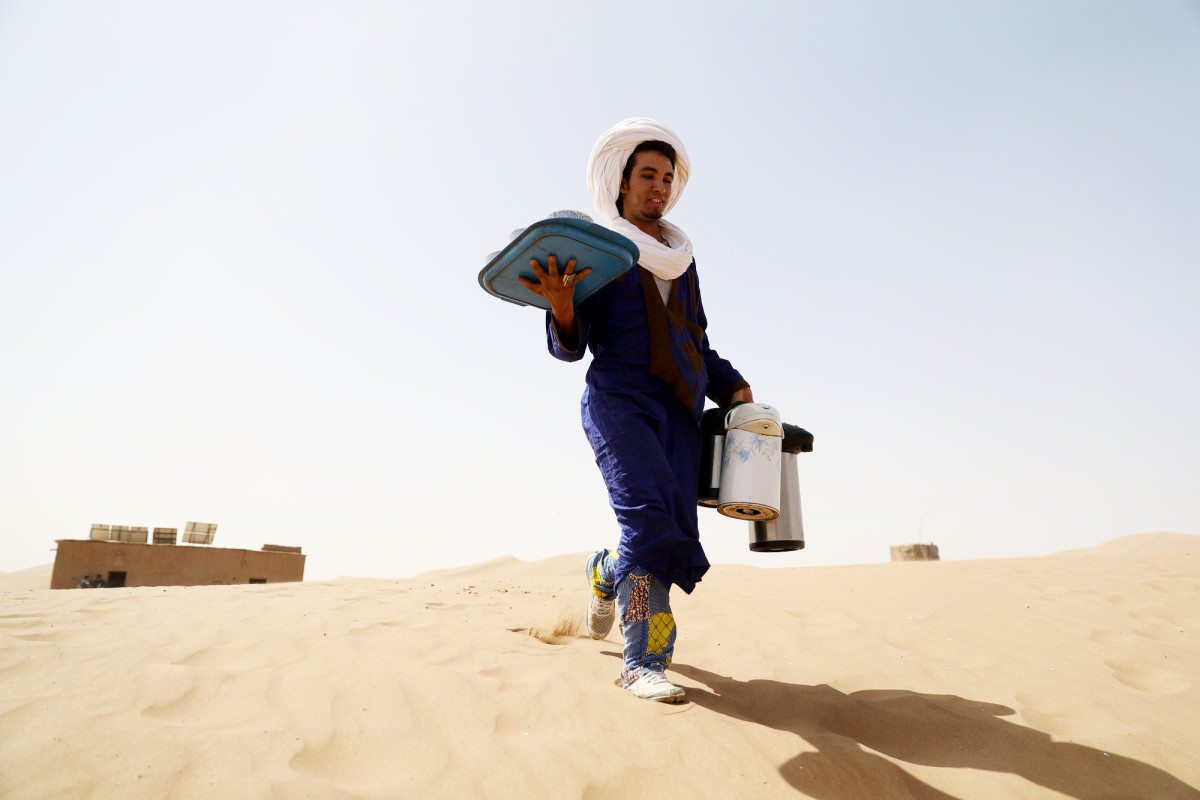
2017 Rallye Aicha des Gazelles
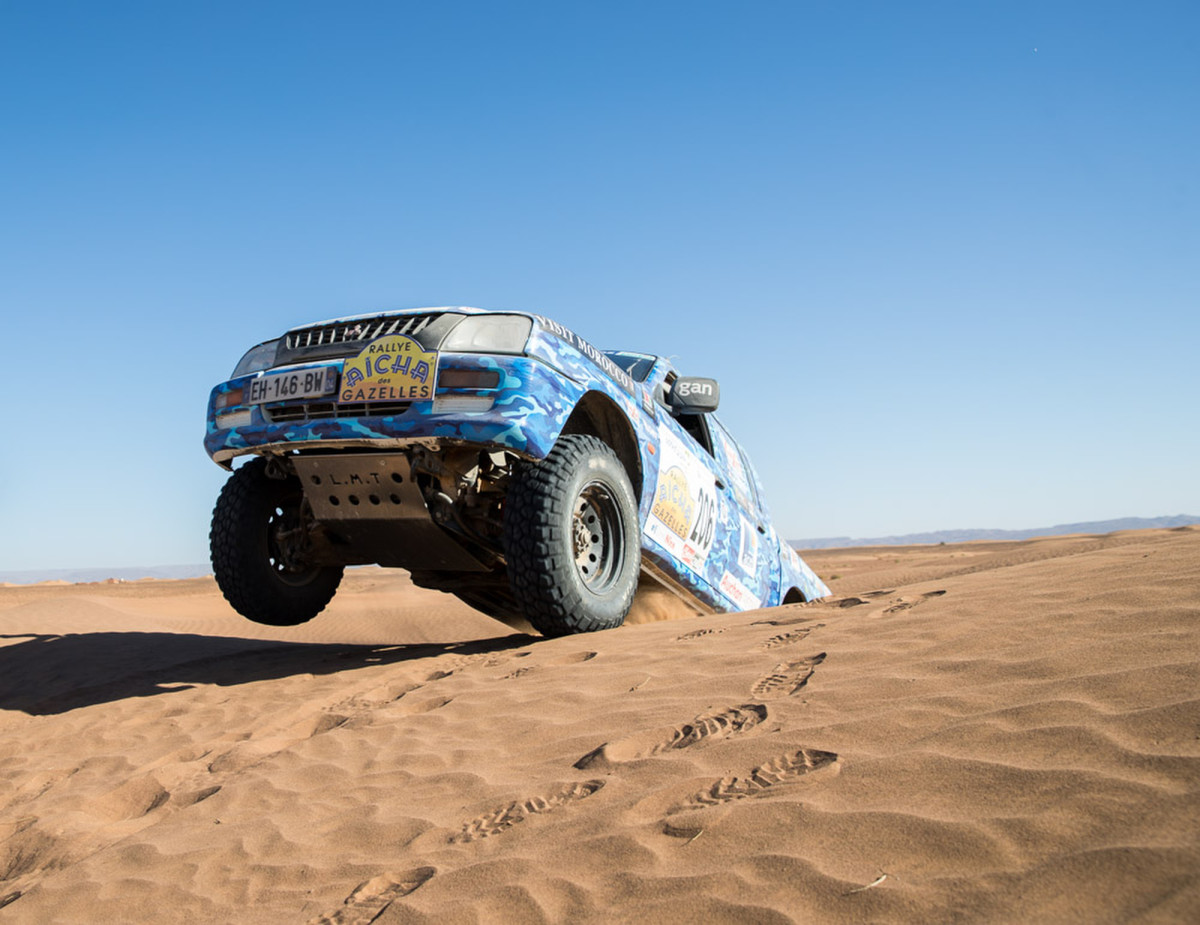
Team 206 of Ingrid PONCHE and Emeline ALMASIO of france during a stage on day2.
2017 Rallye Aicha des Gazelles
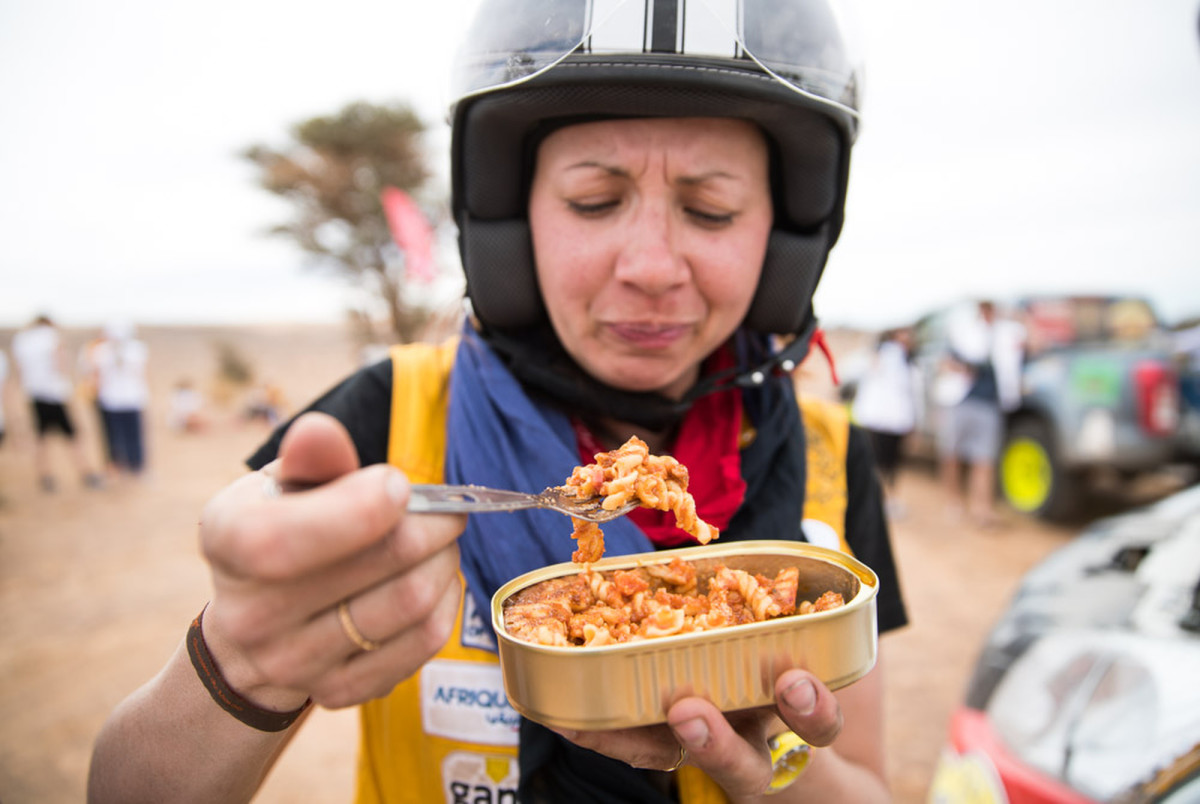
2017 Rallye Aicha des Gazelles
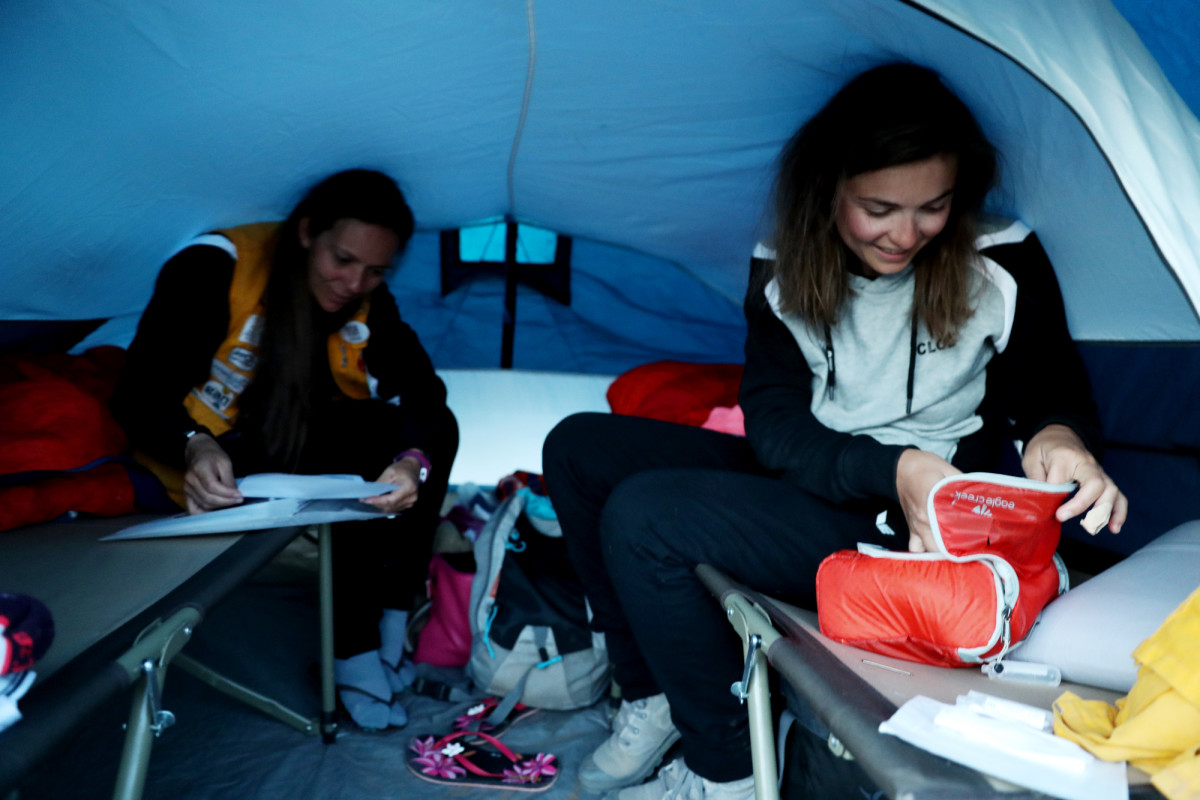
2017 Rallye Aicha des Gazelles
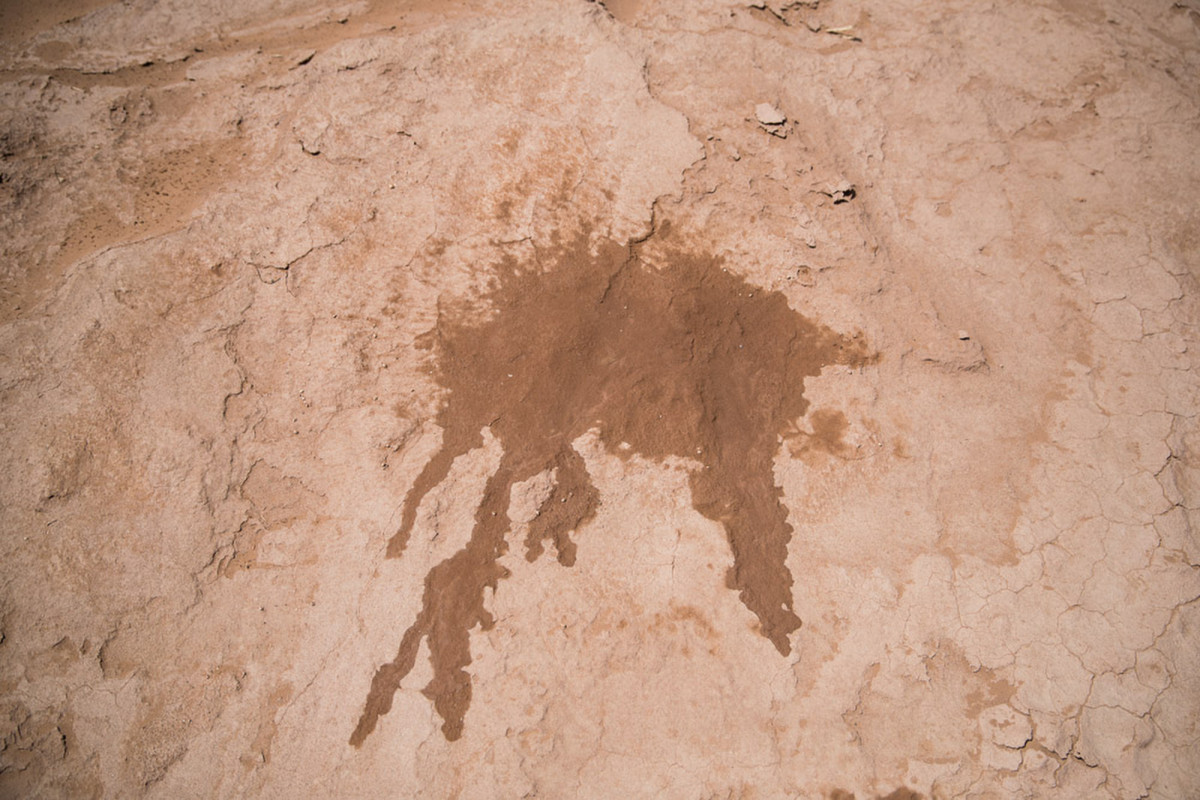
Where do you take a leak?
2017 Rallye Aicha des Gazelles
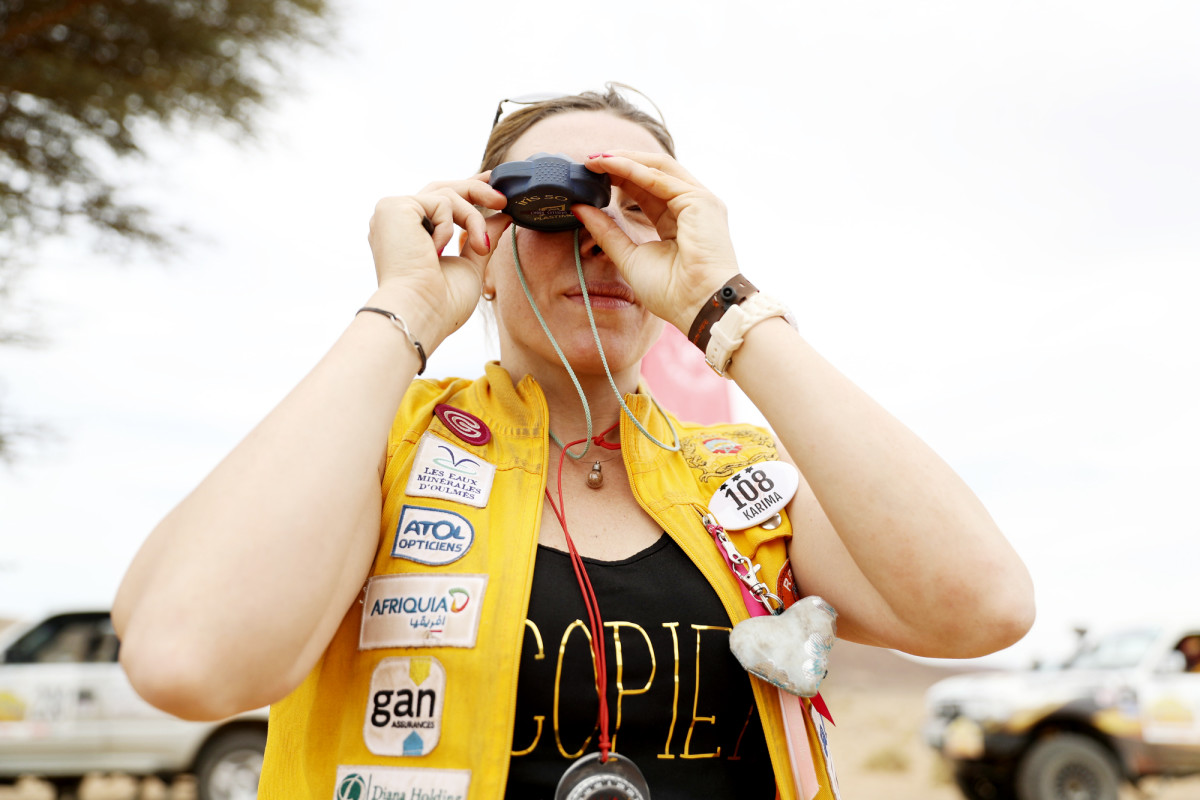
2017 Rallye Aicha des Gazelles
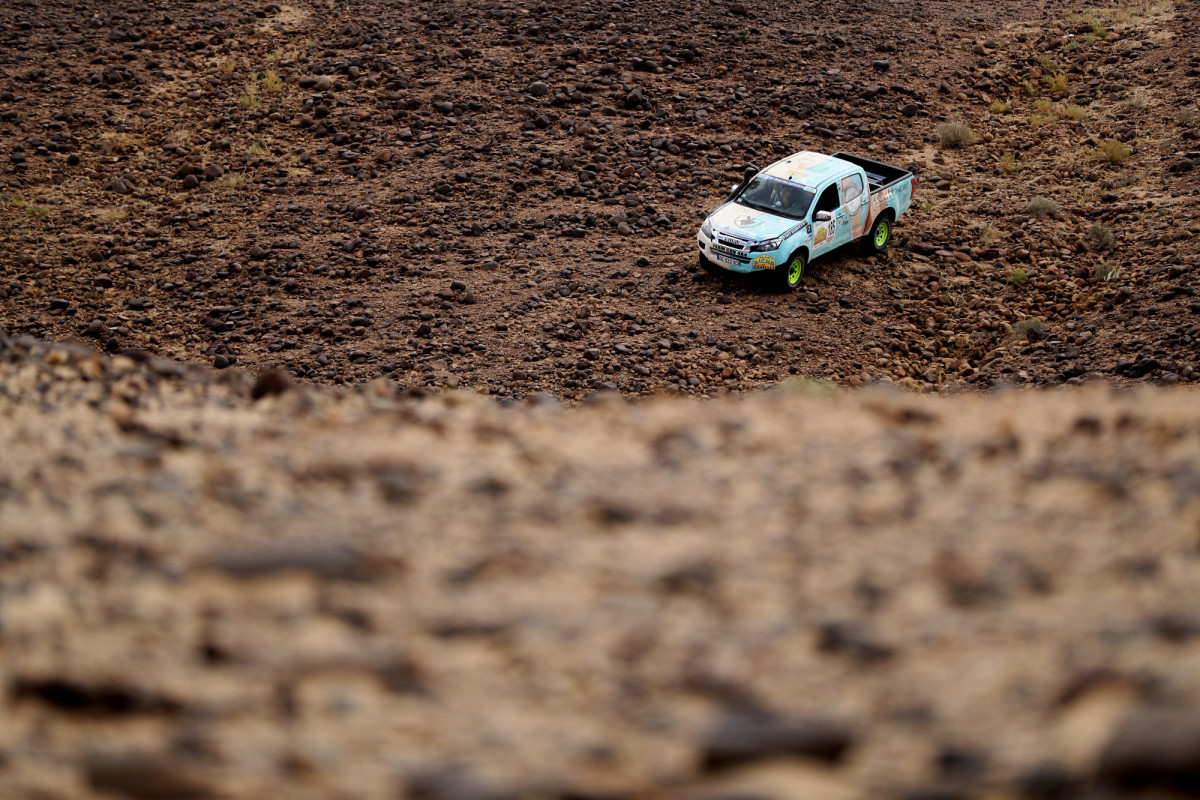
2017 Rallye Aicha des Gazelles
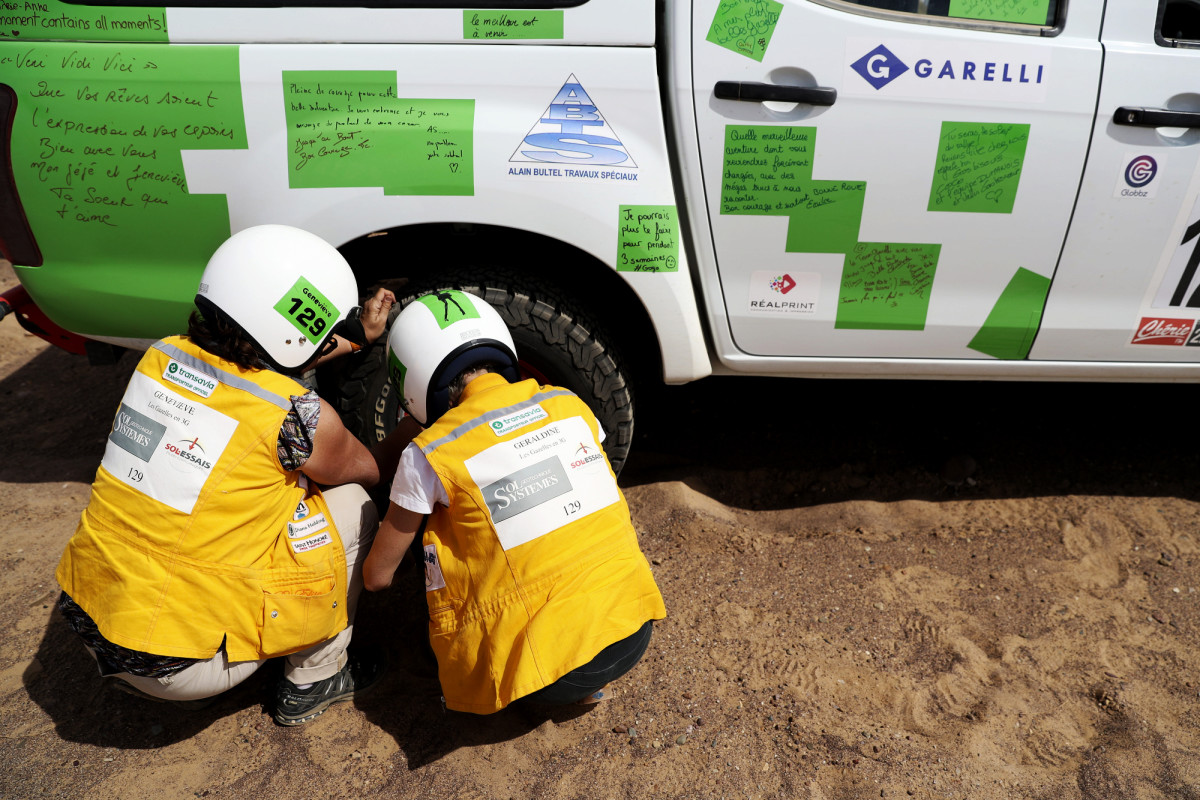
2017 Rallye Aicha des Gazelles
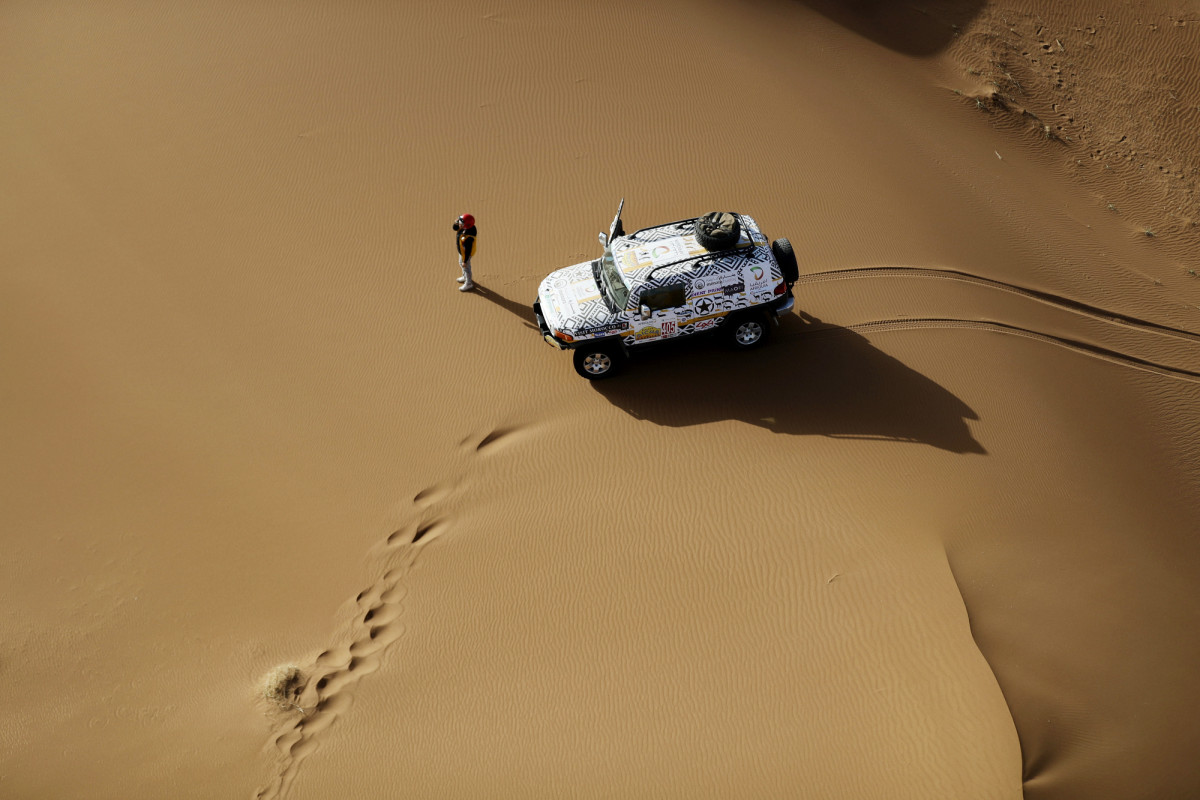
2017 Rallye Aicha des Gazelles
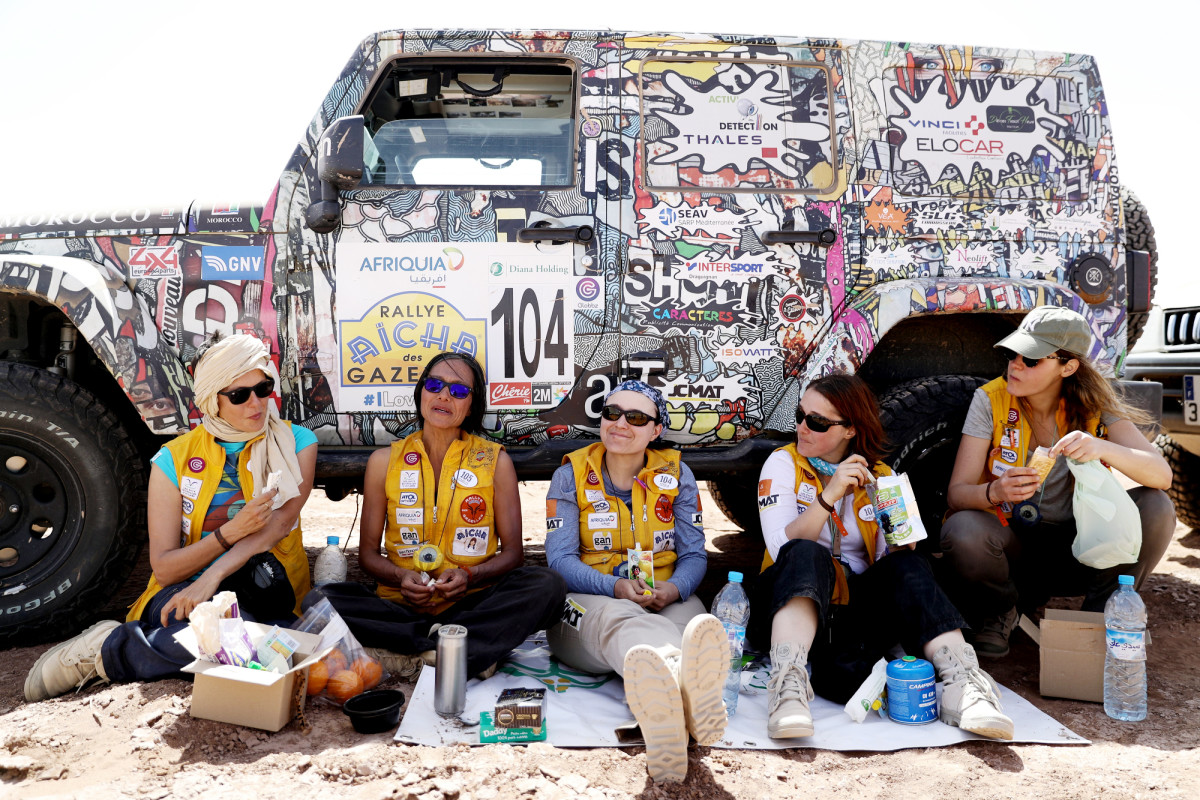
2017 Rallye Aicha des Gazelles
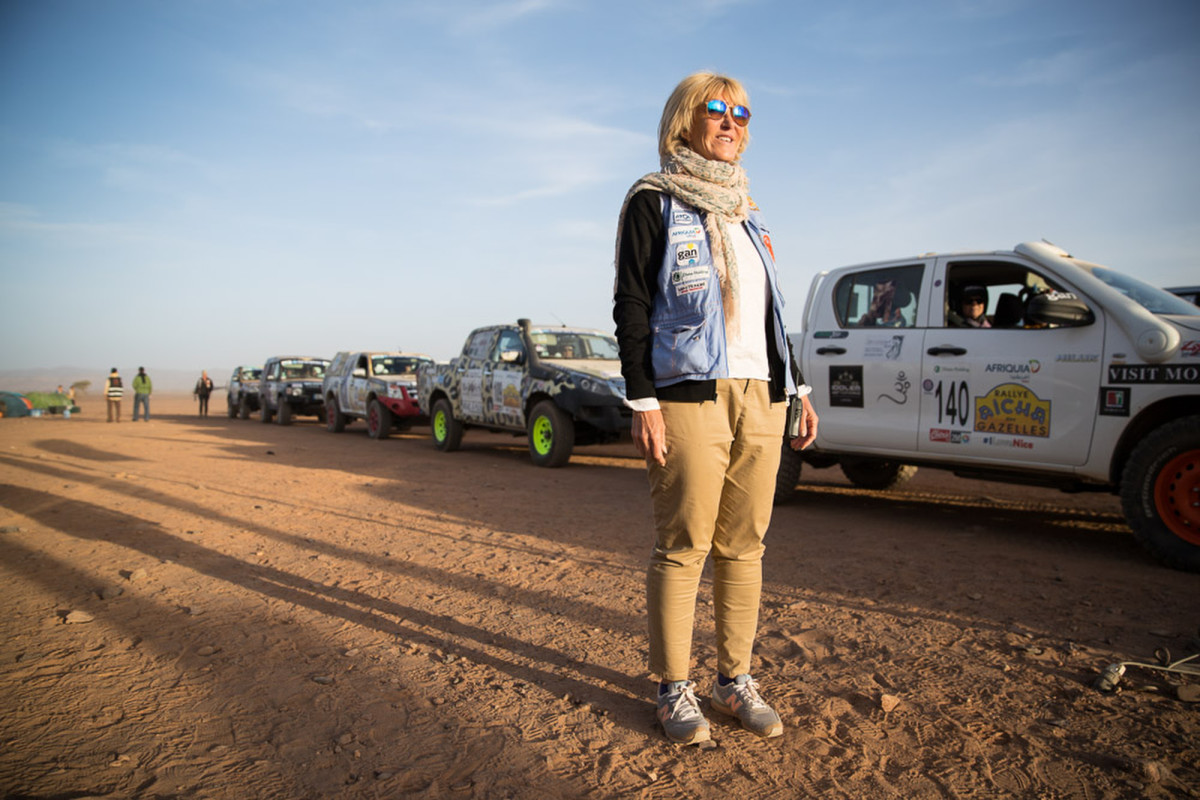
Dominique Serra the founder of the rally watches as car leaves form the start during the last day of competition.
2017 Rallye Aicha des Gazelles
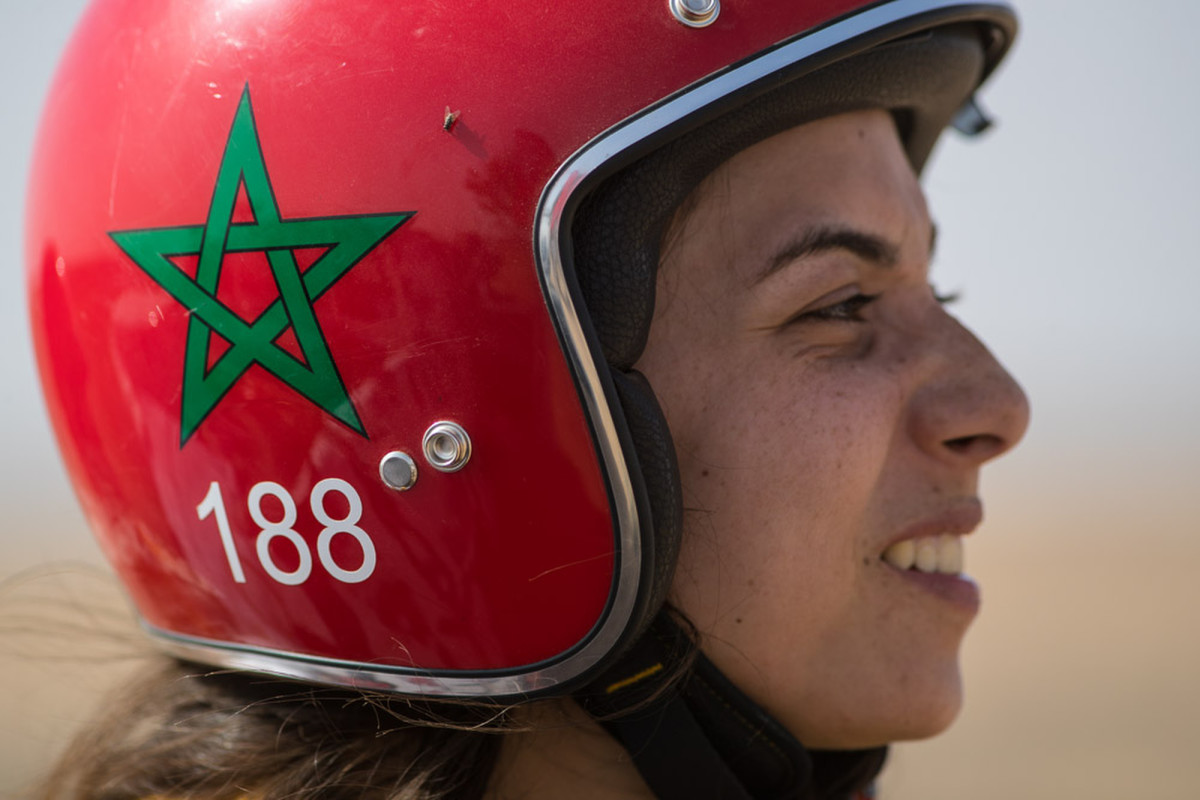
Jawhara BENNANI from Morocco of team 188 at a checkpoint.
2017 Rallye Aicha des Gazelles
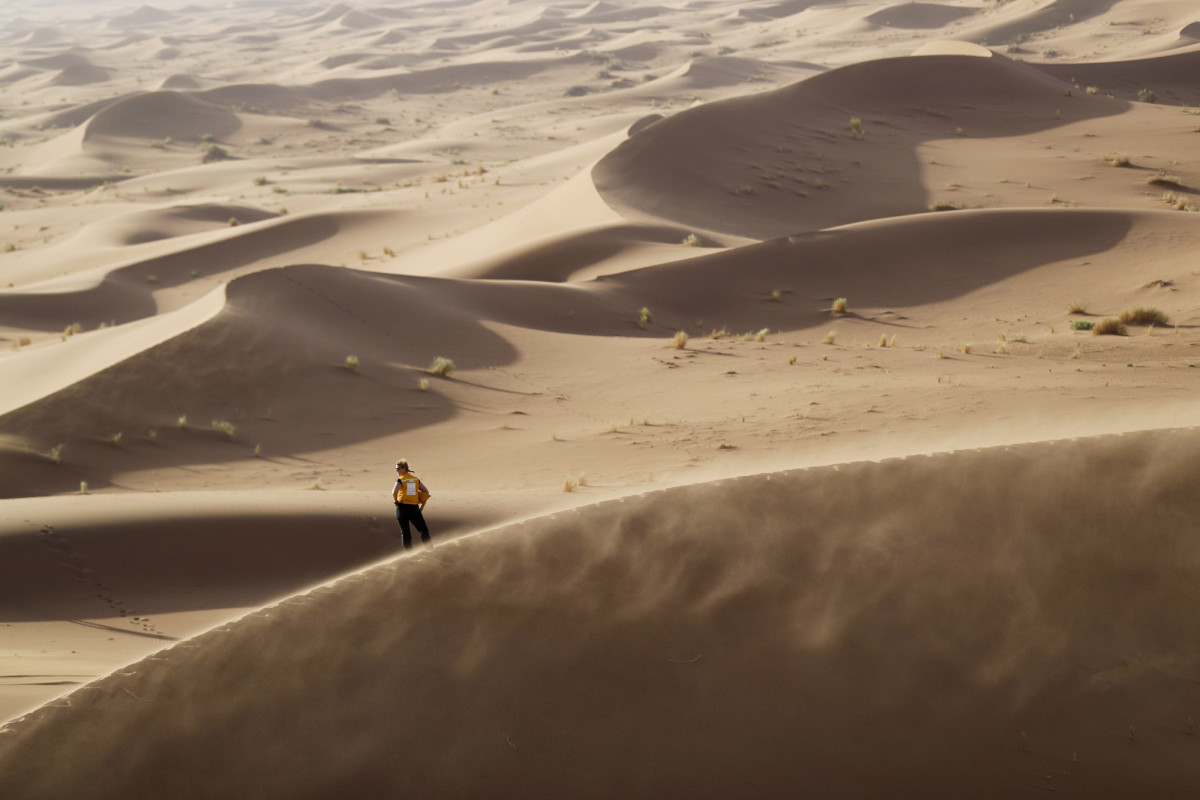
2017 Rallye Aicha des Gazelles
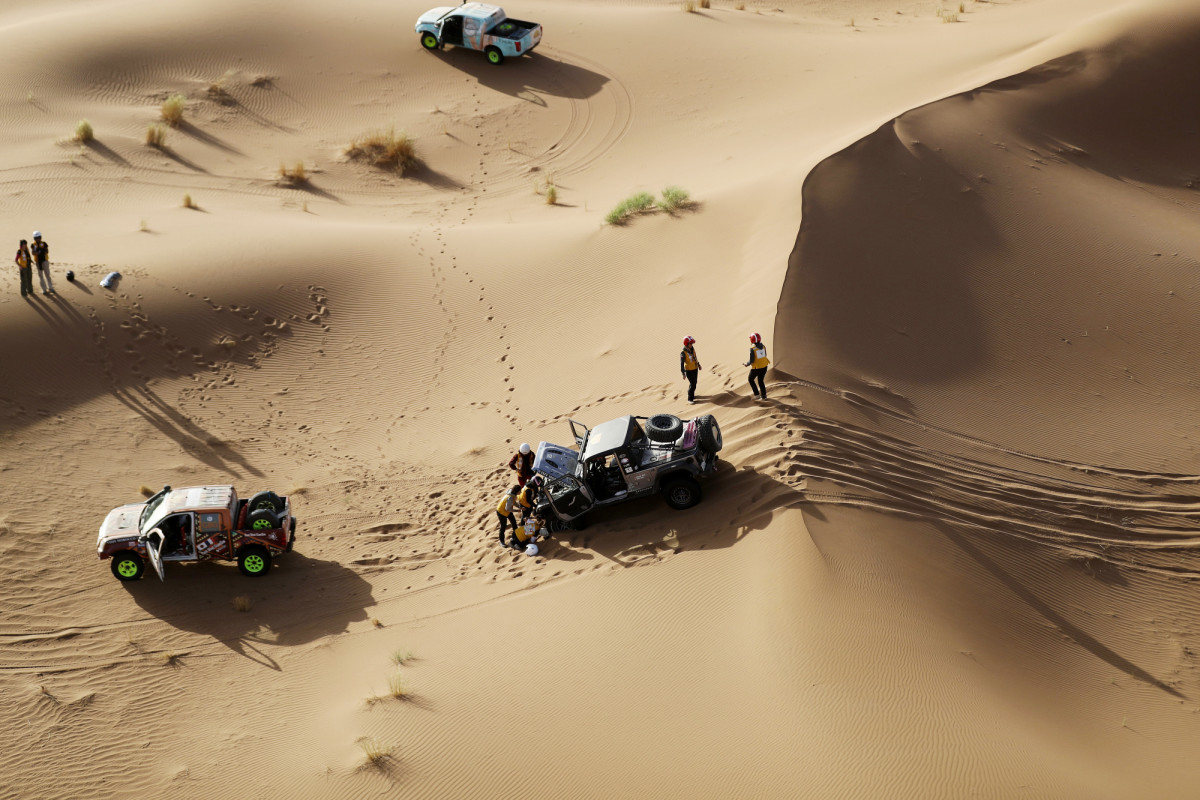
2017 Rallye Aicha des Gazelles
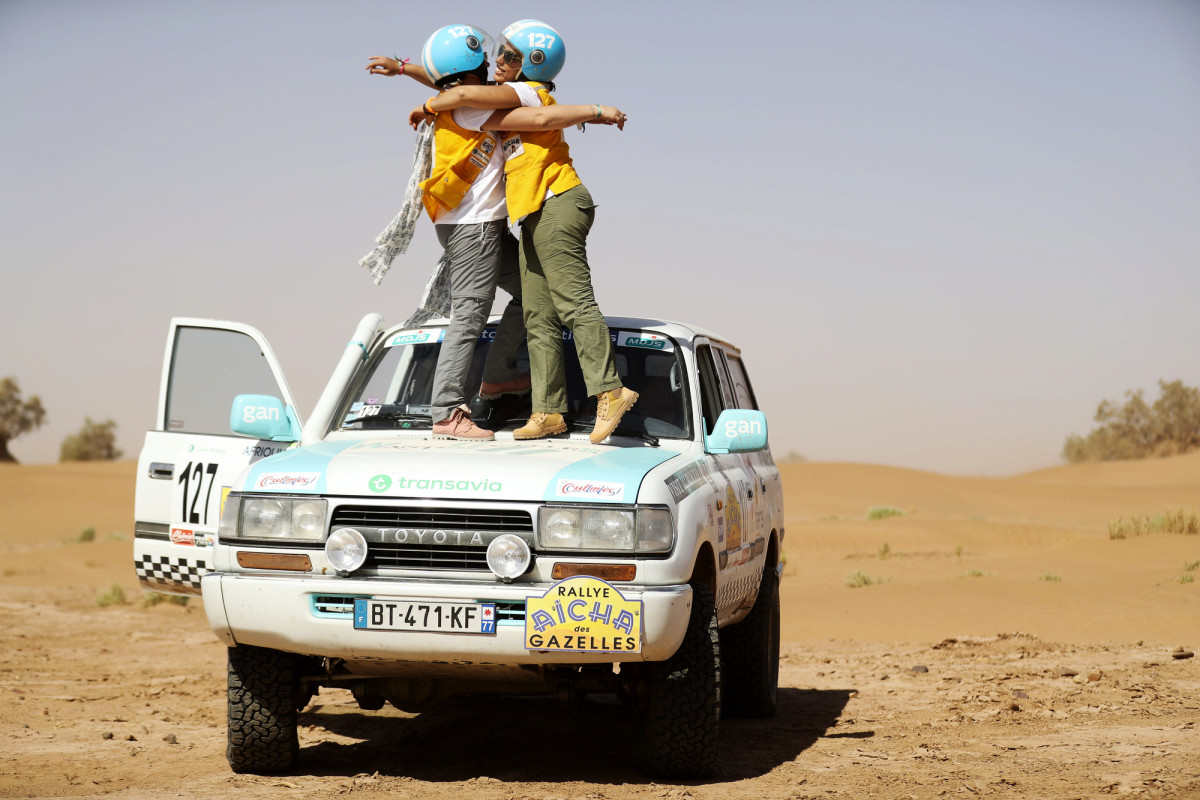
2017 Rallye Aicha des Gazelles
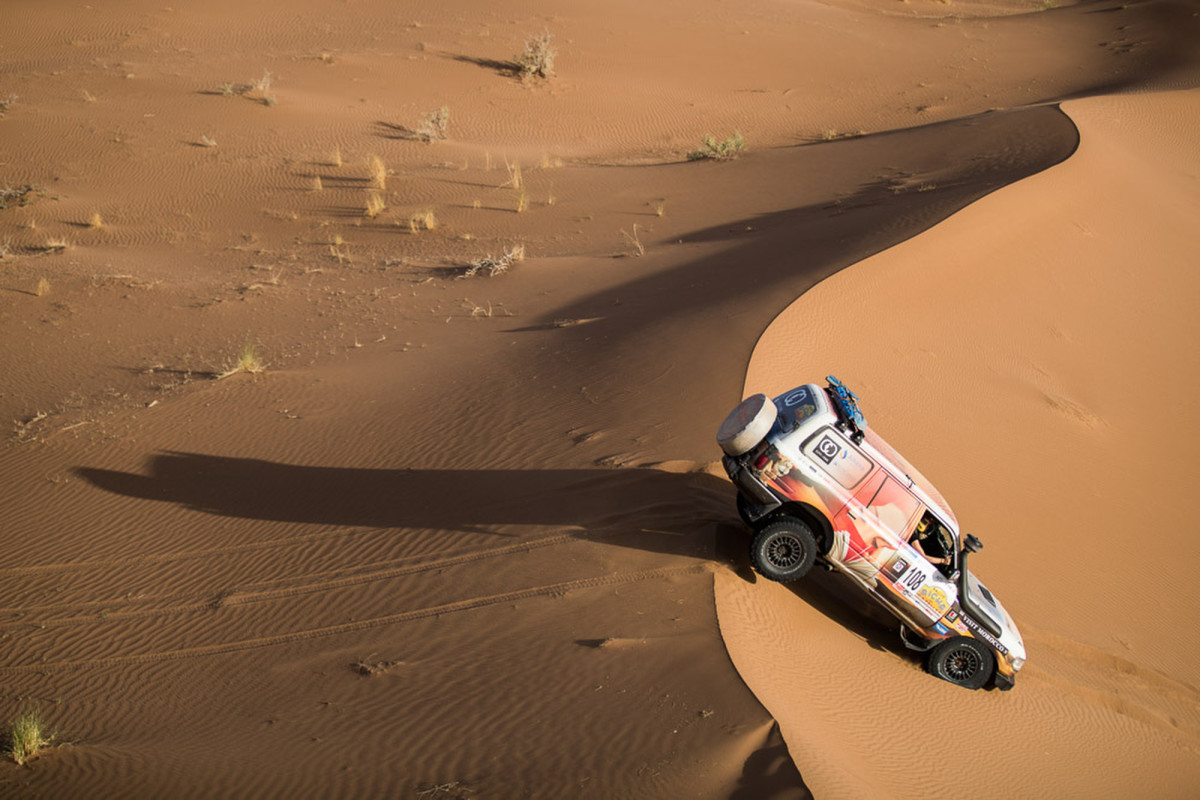
Team 108 of Adeline DROUIN and Karima BENOUARET BENZID from France jump a sand dune during a the leg from Oulad to Foum Zguid.
2017 Rallye Aicha des Gazelles
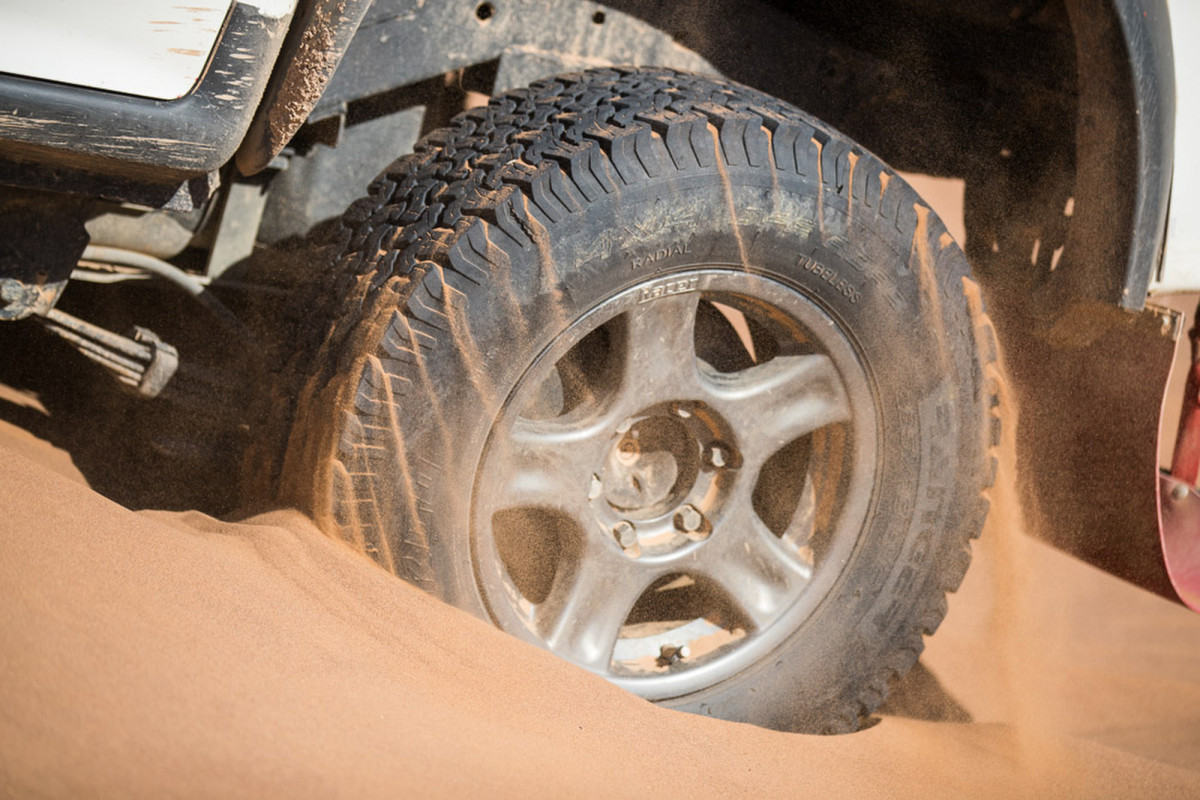
2017 Rallye Aicha des Gazelles
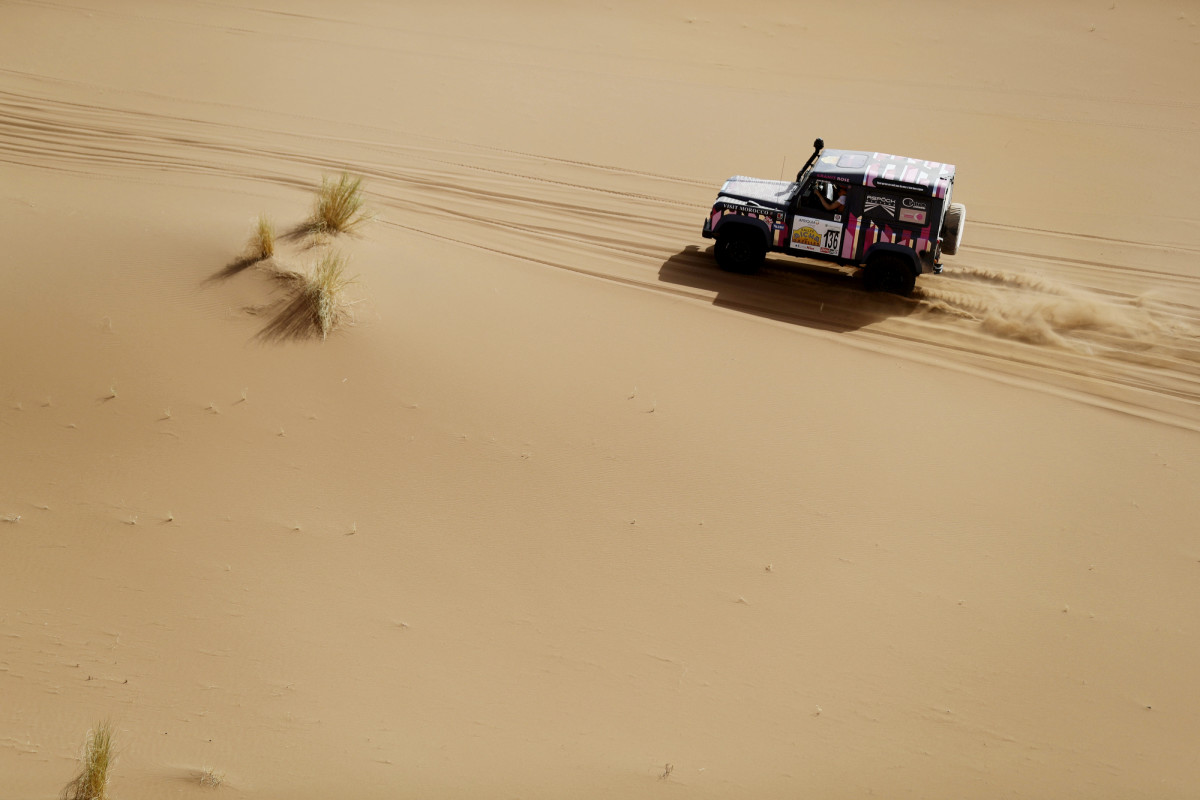
2017 Rallye Aicha des Gazelles
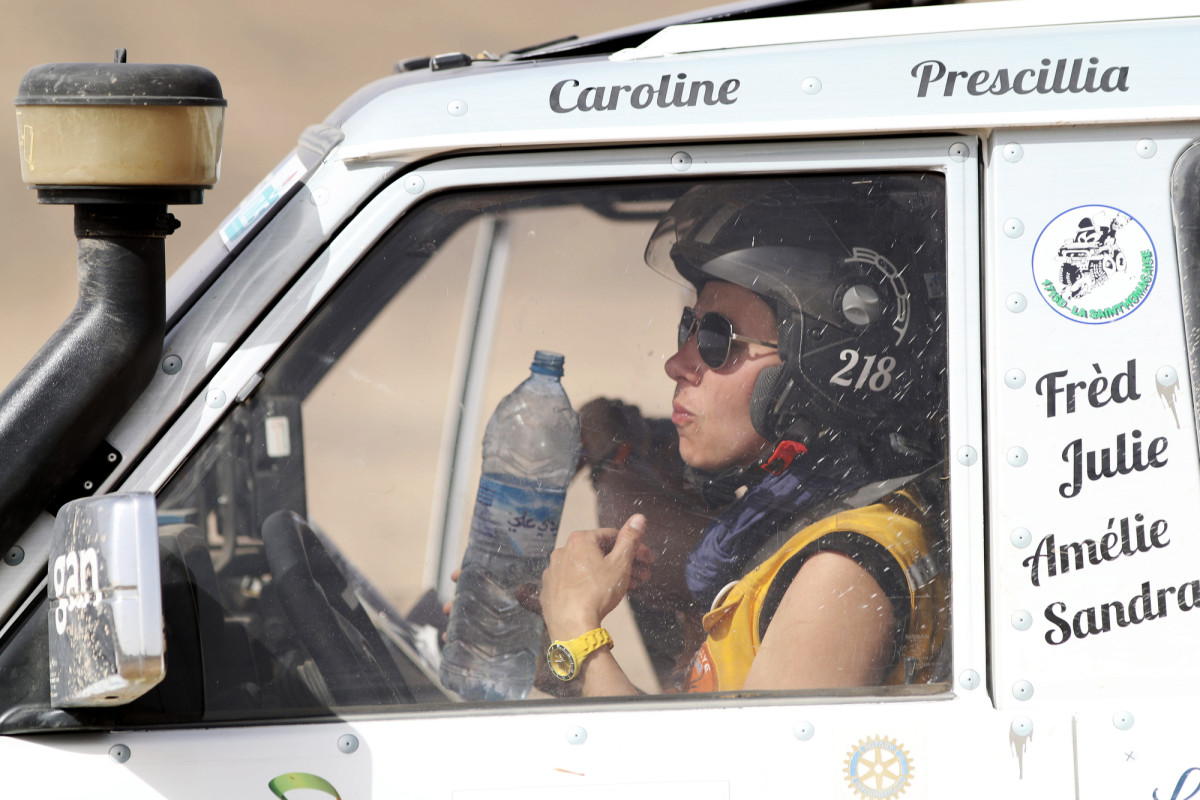
2017 Rallye Aicha des Gazelles
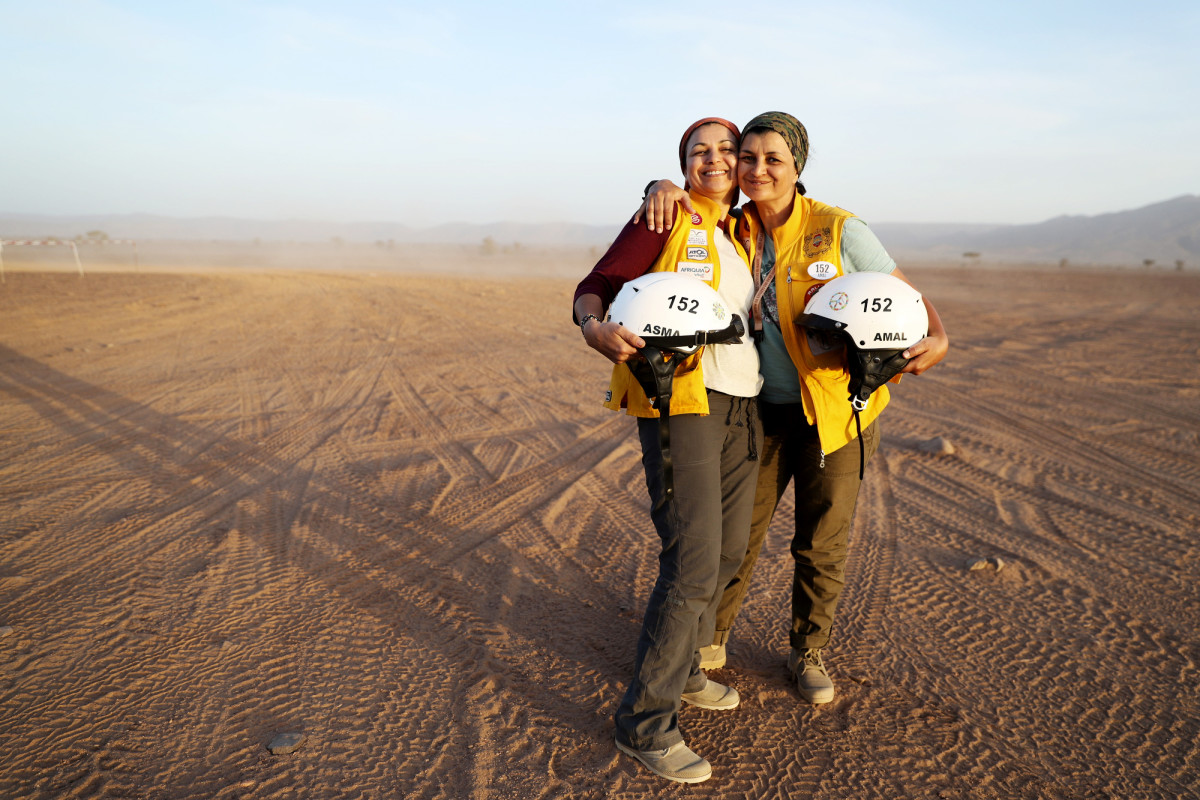
2017 Rallye Aicha des Gazelles
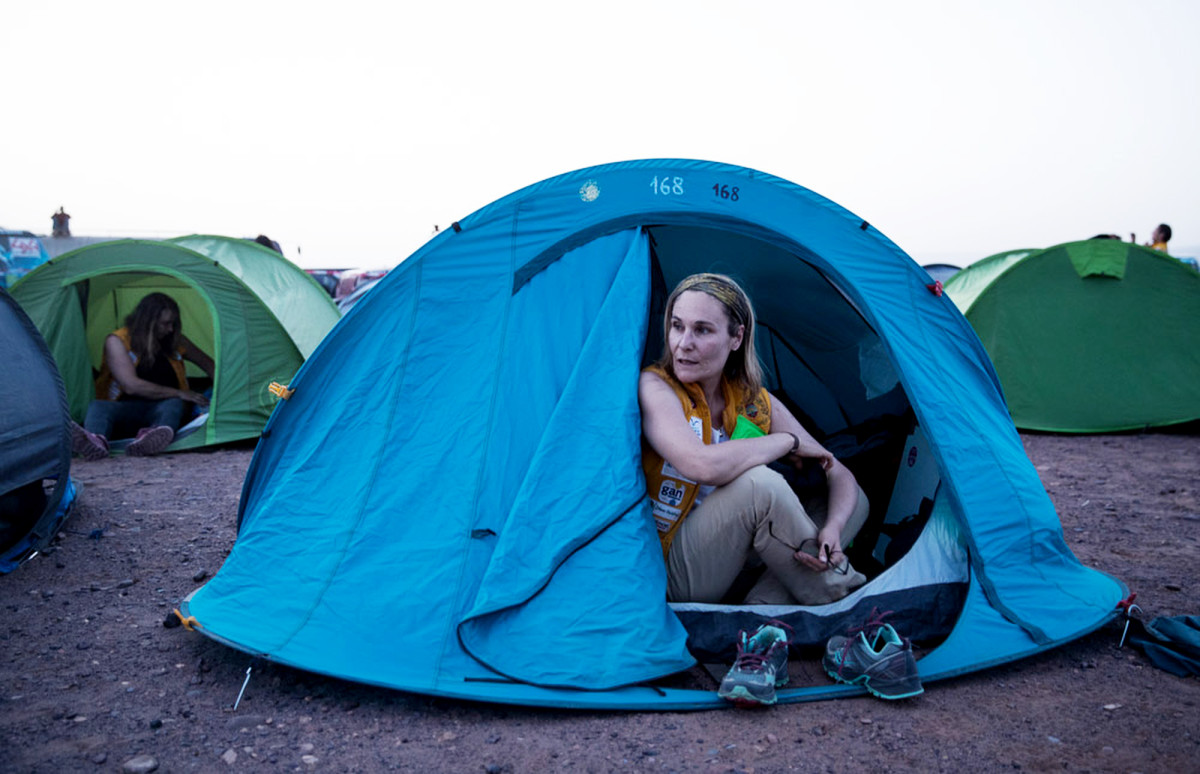
Competitors of the rally have to camp in the desert between legs of the race.
2017 Rallye Aicha des Gazelles
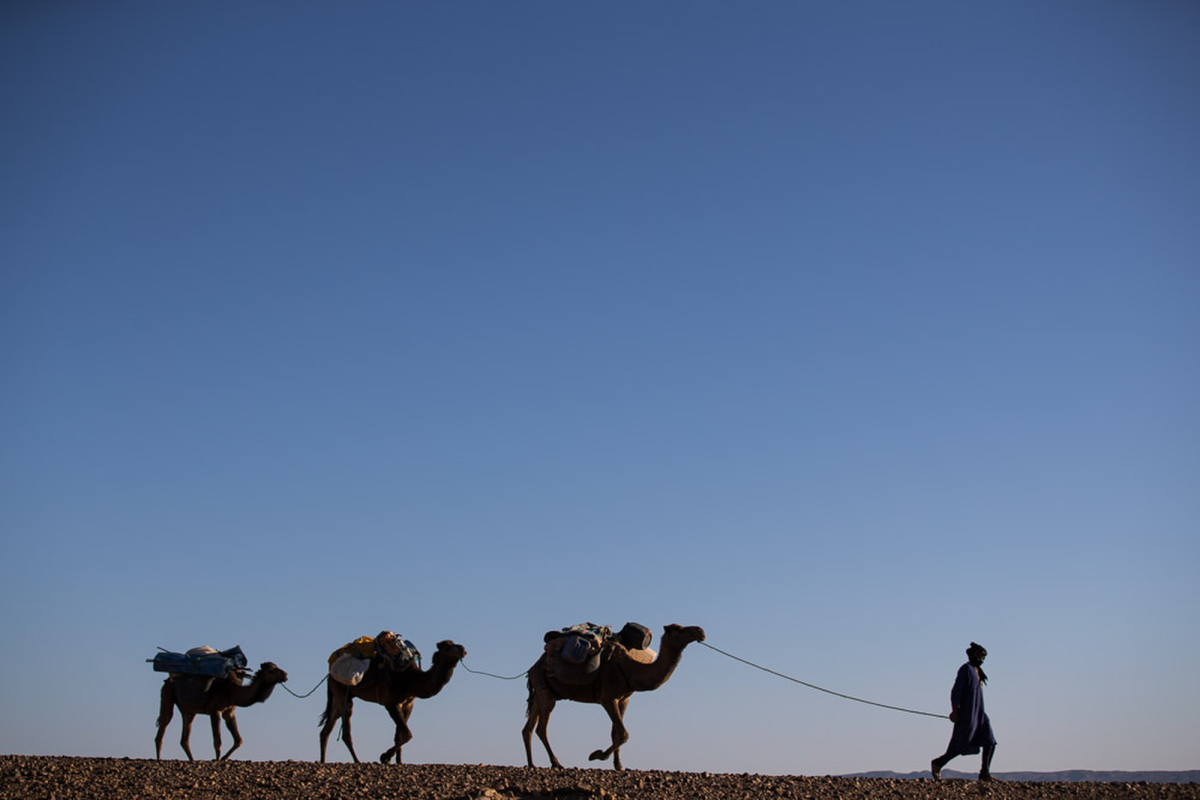
2017 Rallye Aicha des Gazelles
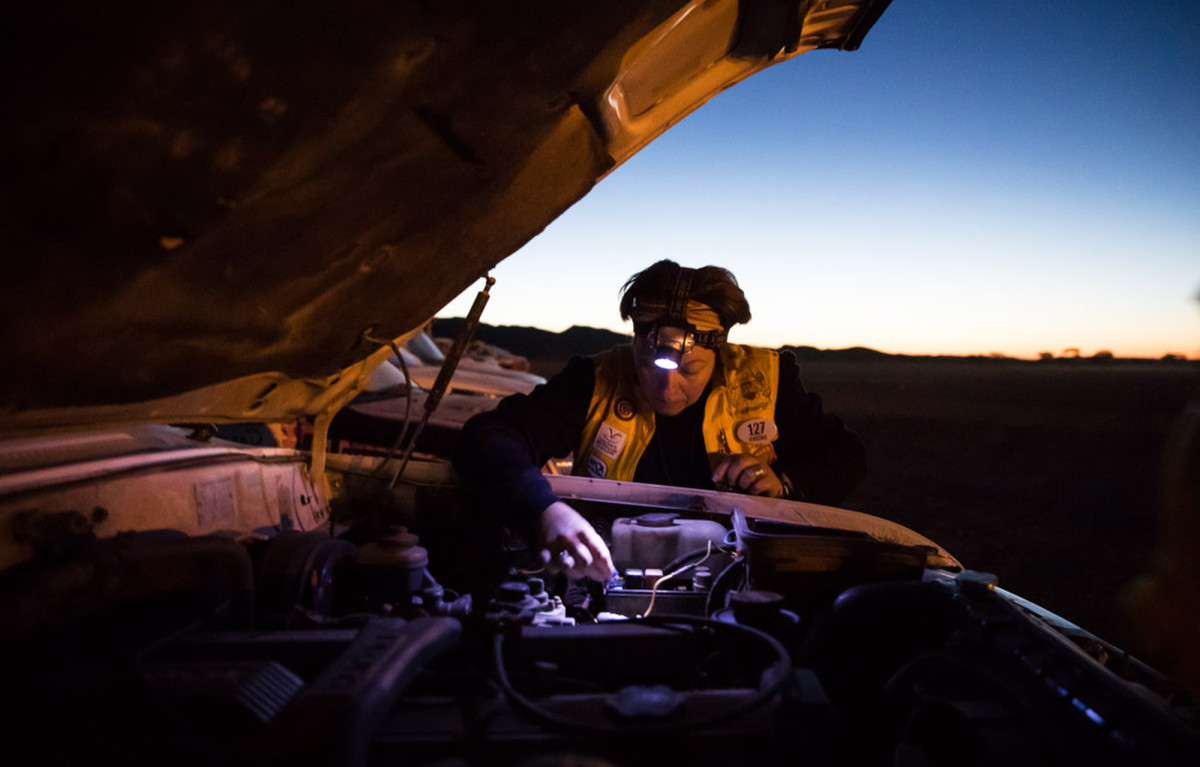
Team 127: VIRGINIE DUEDAL checking the engine before the start of the leg from Oulad to Foum Zguid.
2017 Rallye Aicha des Gazelles

2017 Rallye Aicha des Gazelles
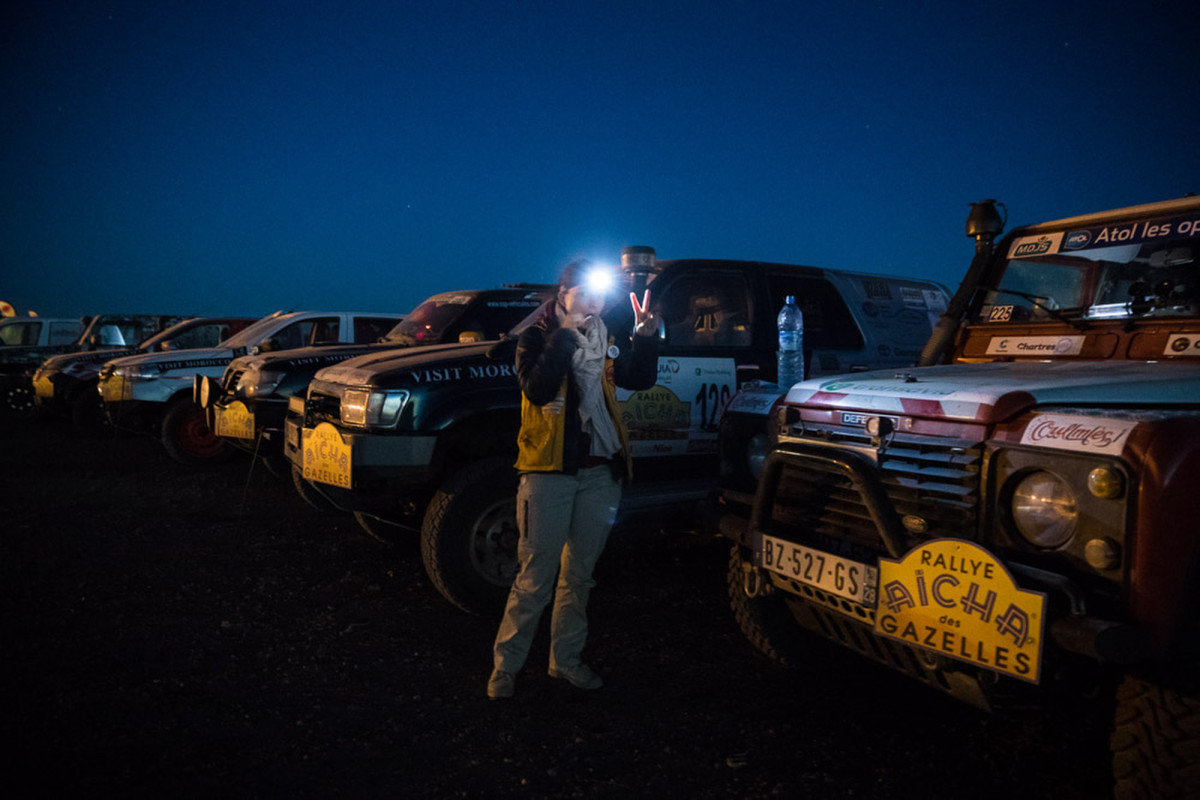
Early morning before the start of the rally.
2017 Rallye Aicha des Gazelles
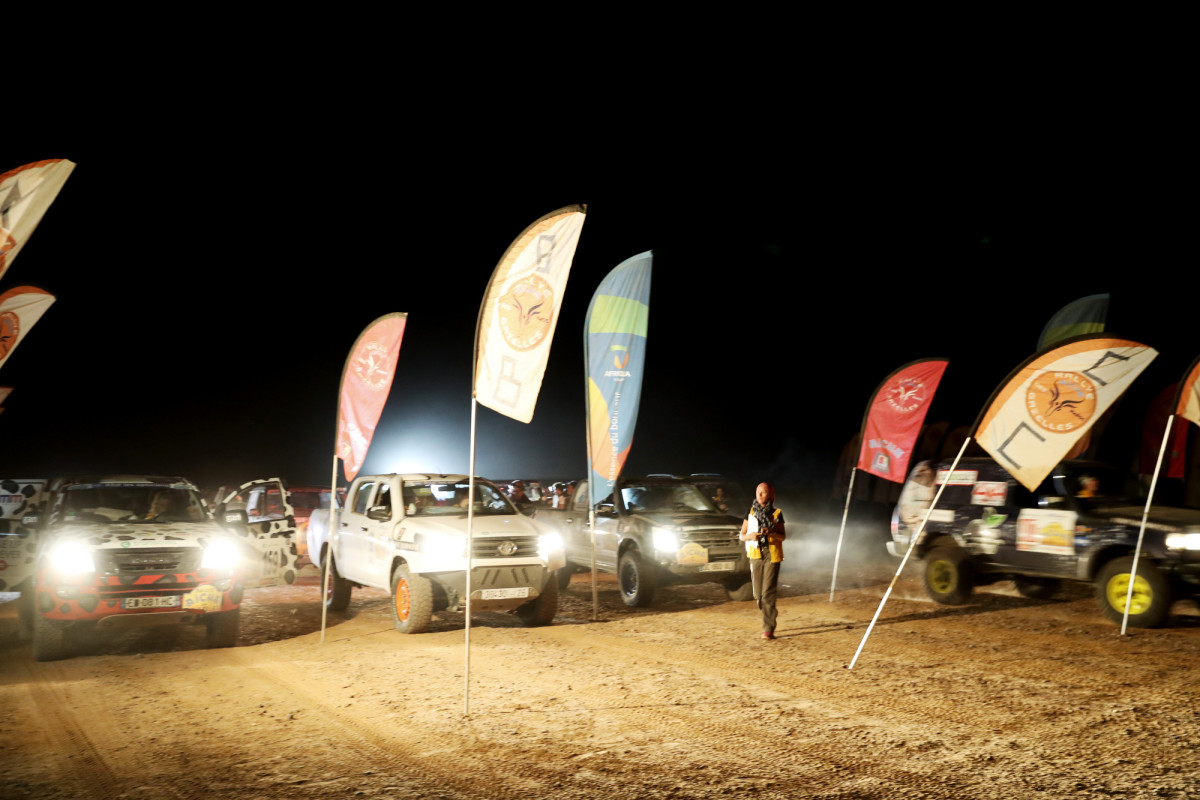
2017 Rallye Aicha des Gazelles
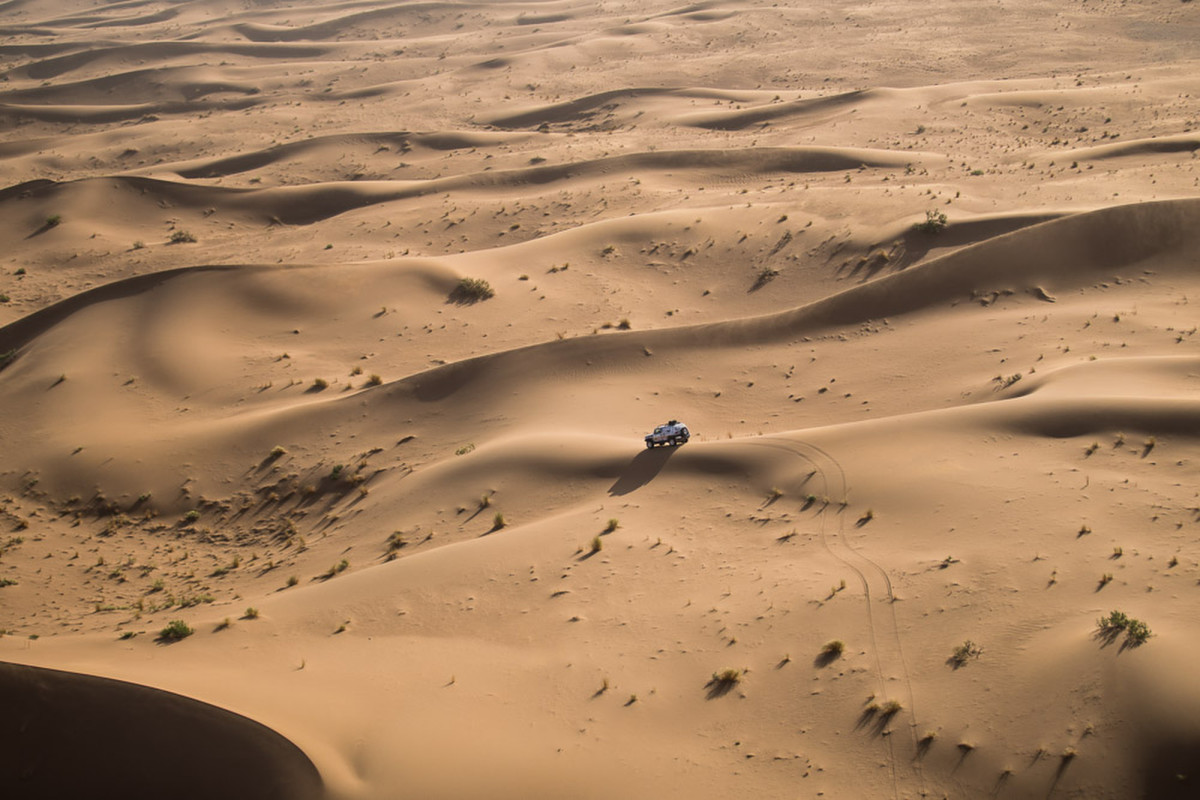
Stephanie Perusse, a mother of two teenagers who renovates and flips houses in Montreal, says she's wanted to compete in Morocco for 20 years, but her father dissuaded her. "He said it's a rally for little women who don't know what to do with their time," she says. Her father is Jean-Paul Pérusse, a professional rally driver and two-time Canadian champion. "I used to call it just a social event," Jean-Paul says. "You have actresses who do it so they can talk about it at cocktail parties. I told Stephanie, 'I'll help you prepare the car, but this is a Sunday ride in the desert.' " But once he started researching the course, once he saw the dunes, the sandstorms and the rocky hills, he changed his mind. "It's not a race against time, but it's no Sunday drive either," he says. "It's tough to do well."
With rare exceptions, auto racing is a sport dominated by men. Stephanie says she would have loved to race when she was younger but the landscape was just too forbidding. "I looked and there were some women in Formula One, but they were placing last," she says. Even at the grassroots level—the kart racing that draws in young racers—girls are rarely seen on the track. "When you see that the basic school for racing is not appealing to girls," says Jean-Paul, "it's understandable that you don't see many ladies in Indy or Formula One."
Stephanie's father worked on her Toyota FJ Cruiser for months after she committed to the rally, reinforcing everything that could be reinforced. They shipped her vehicle over to Portugal in February and after a ferry ride arrived in Tangier to make the start. Once the race was underway, he followed her online. The cars have satellite positioning devices that allow officials and family members and sponsors back home to track them—and to send a rescue party if needed.
As the competition wound down, Jean-Paul began getting the same adrenaline hit watching the blip on the screen that he felt when he was winning his own races. "It's a feeling you don't know if you haven't really won something," he says. By 4 p.m. on the last day it was clear Stephanie was going to crack the top three—a podium finish. Jean Paul bought a ticket to Morocco then and there and was at the airport by seven that night. It was just too good to miss.
When he got to the coastal town of Essaouira, where the ceremonial finish took place on April 1, Jean-Paul was disappointed to find that the Gazelles don't do a podium presentation. "One of the organizers said it would take too long," he says, incredulous. But as Serra puts it, this is an event for "women among women." So no podium—but there was a formal gala in a room decorated, according to the organizers, like a "magical garden with birds singing and extravagant floral arrangements.”
And there was a parade on the beach. Jean-Paul drove his daughter's truck while she and her teammate, Marie-Sophie Gauthier, sat on the roof. He was a little irked that the vehicles weren't in order by ranking. "So I started passing trucks left and right so we ended up being second," he says. "Stephanie was quite mad." After all, this rally was never about speed, or getting somewhere first. There was so much more going on for these 316 women—hairdressers, opticians, models, mothers—who stepped out of their lives and into the desert to test themselves. For some, just dedicating the time and money to the event was liberating. That was visible in their faces as they drove on the packed sand of the beach, waving bras and flowers. All the sandstorms and the impossible dunes were behind them. But not out of mind.
"In a few days I'll be another person," Benzid said. Her job with Air France requires a smooth, tight hairstyle, a pressed uniform and full makeup. But for two weeks in the desert it didn't matter if her locks were frazzled and her clothes were baggy. Not when there was another checkpoint ahead.
